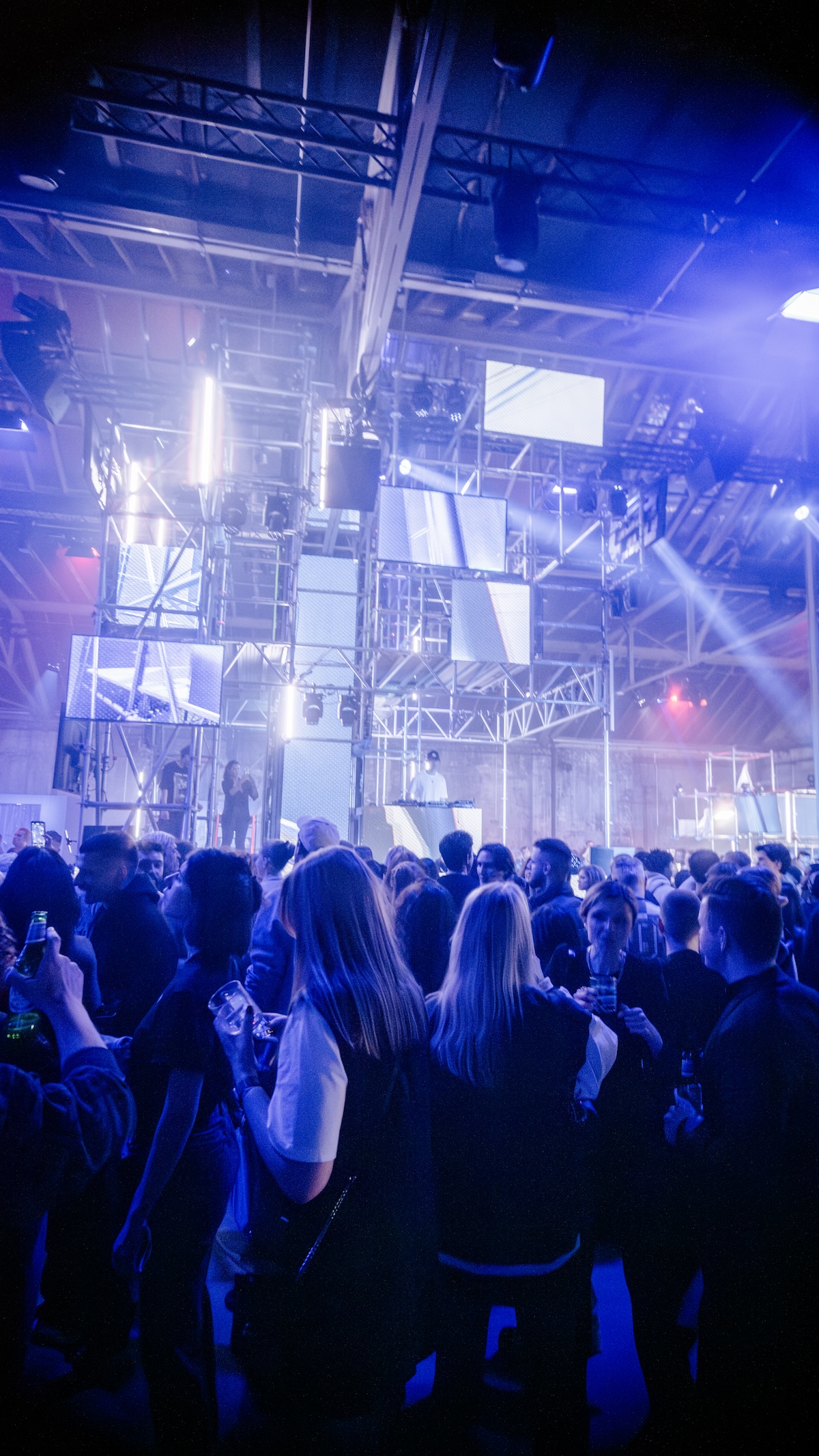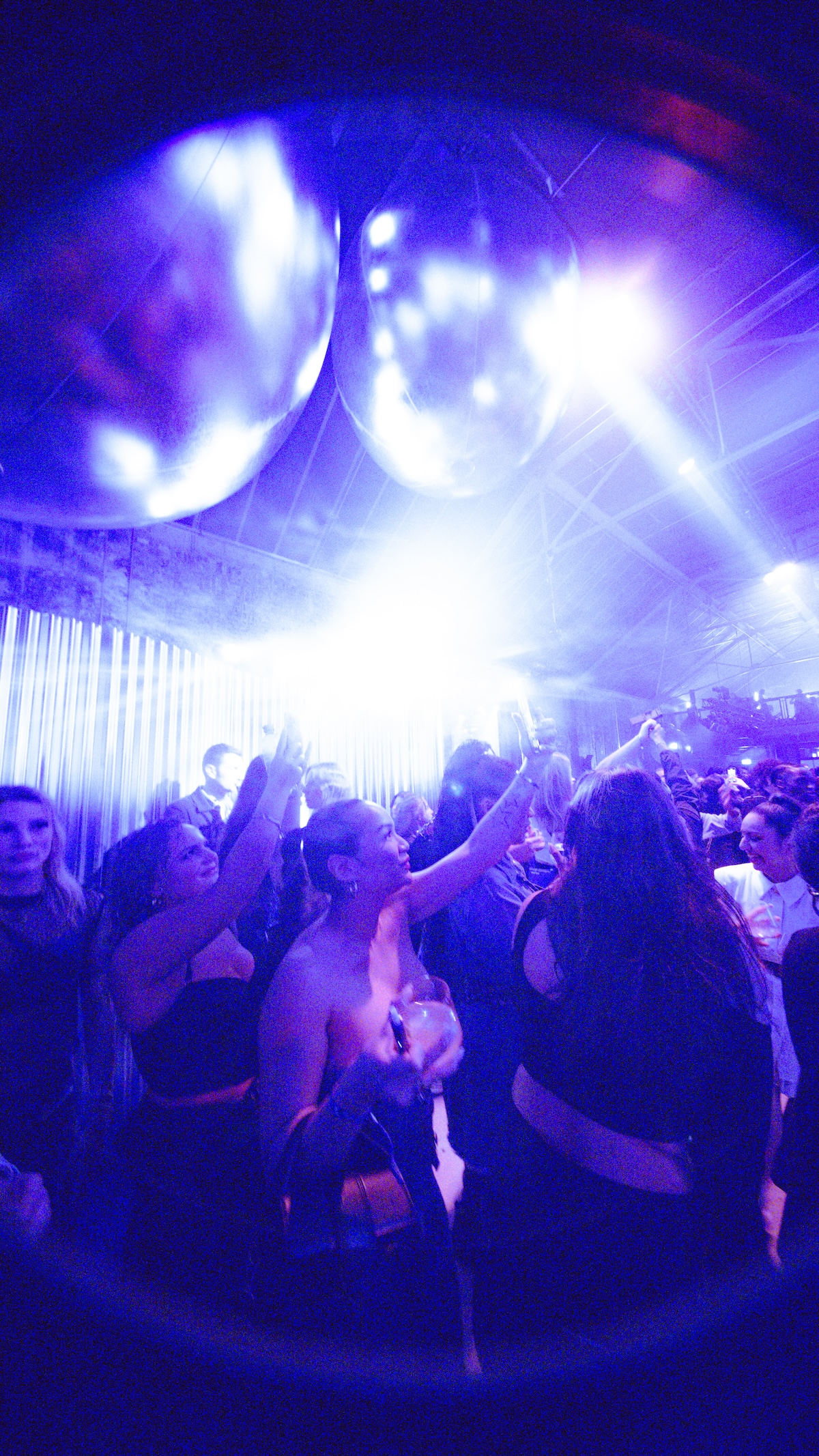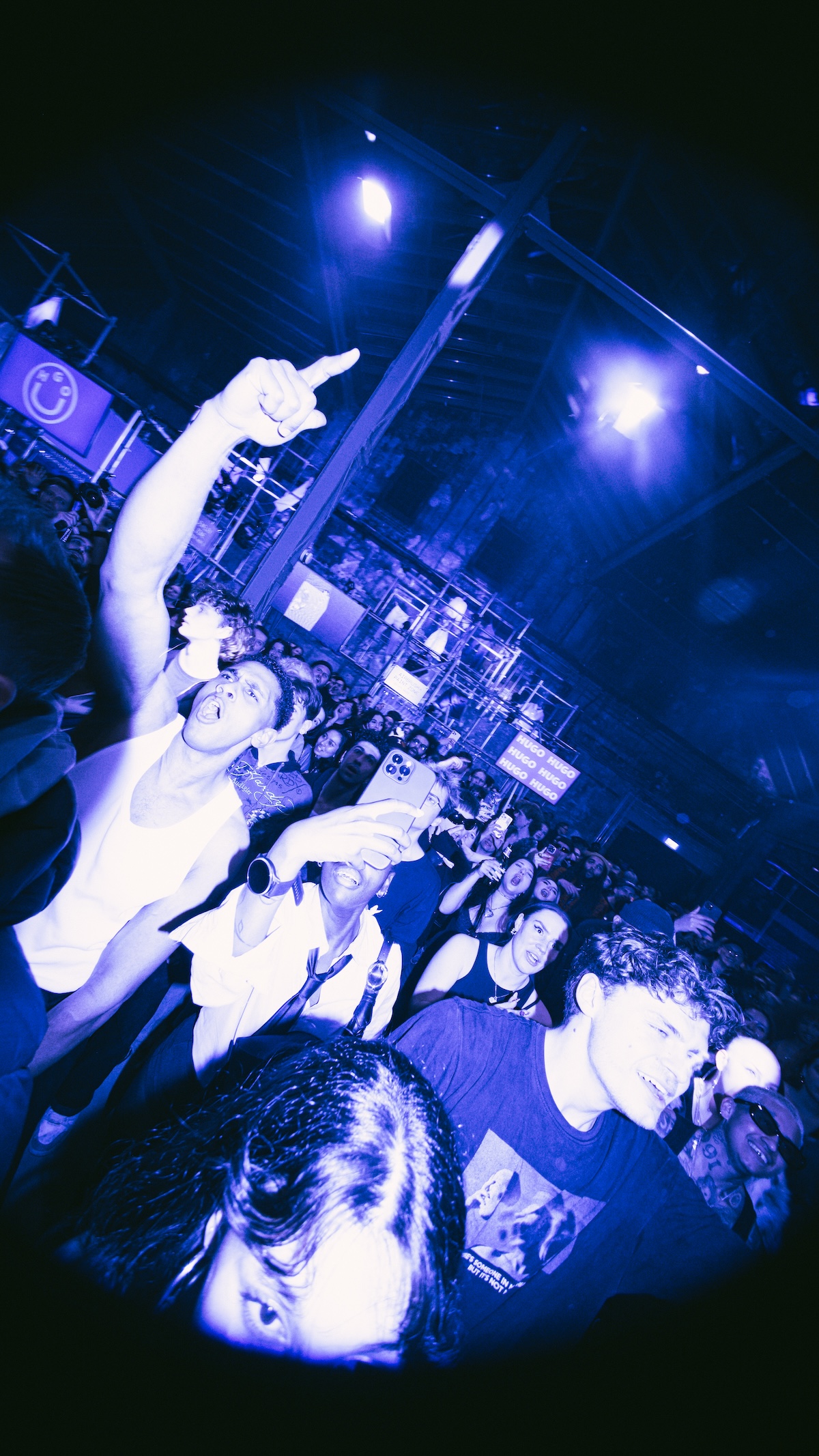Mudd Pearl's Startling Ocean Starlets
- Director Boma Iluma
- DoP Charlie Owens
- Producer Jon Brogan
- 1st AD Aspen Miller
- Score Kidä
- Editor Aicha Cherif
- Prod asst Ashley Parcels
- 2nd Prod asst Kayla Parlante
Stay informed on our latest news!

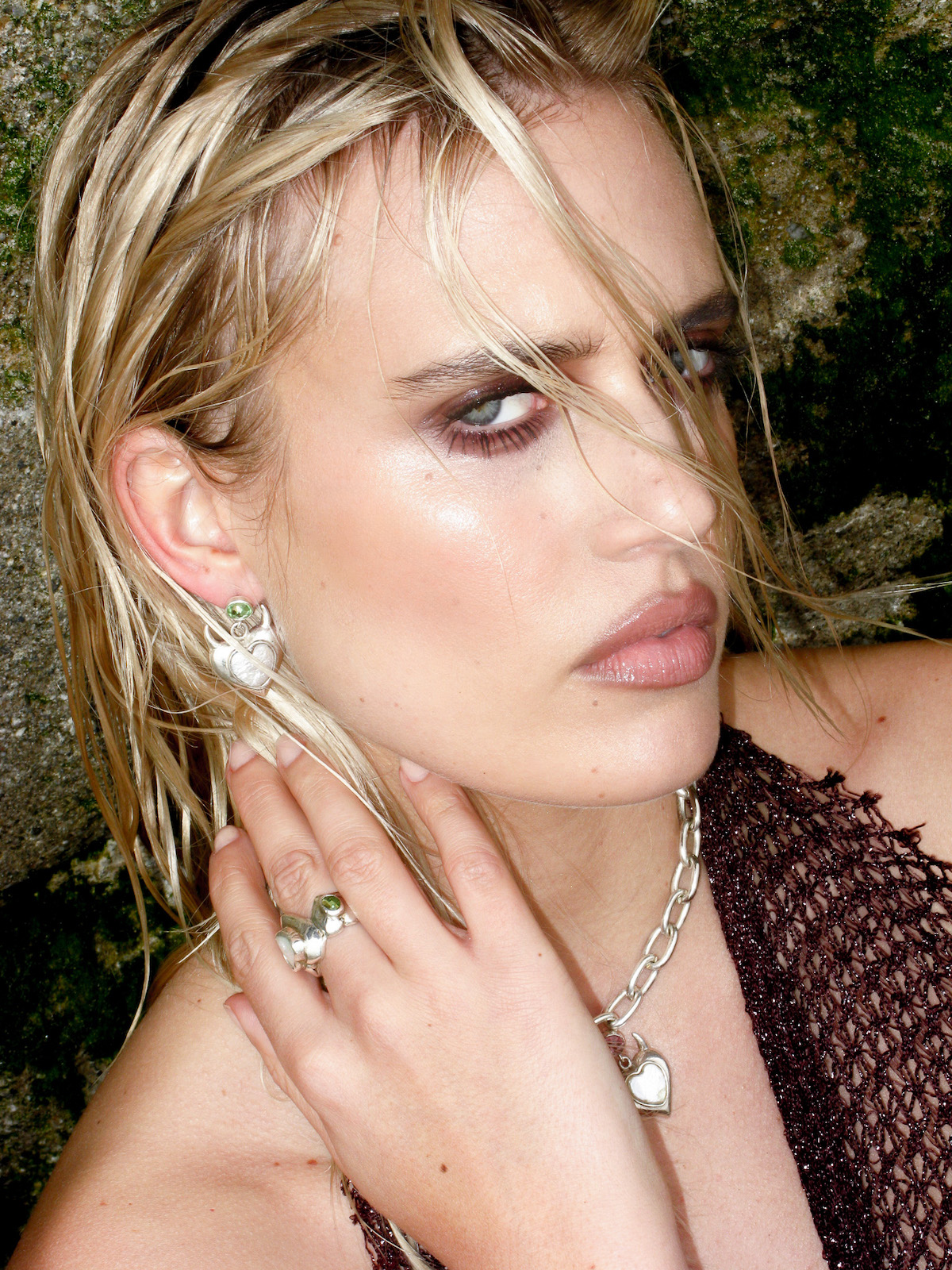
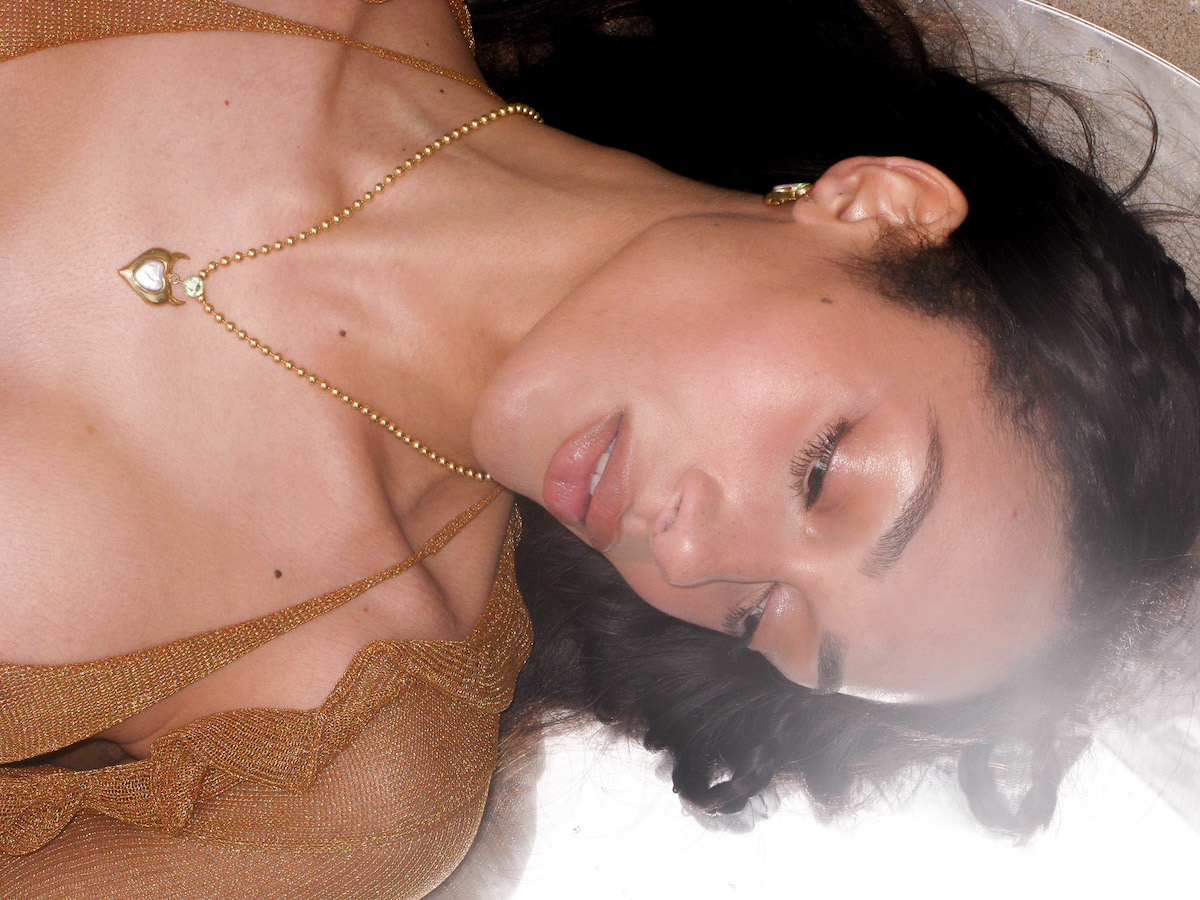
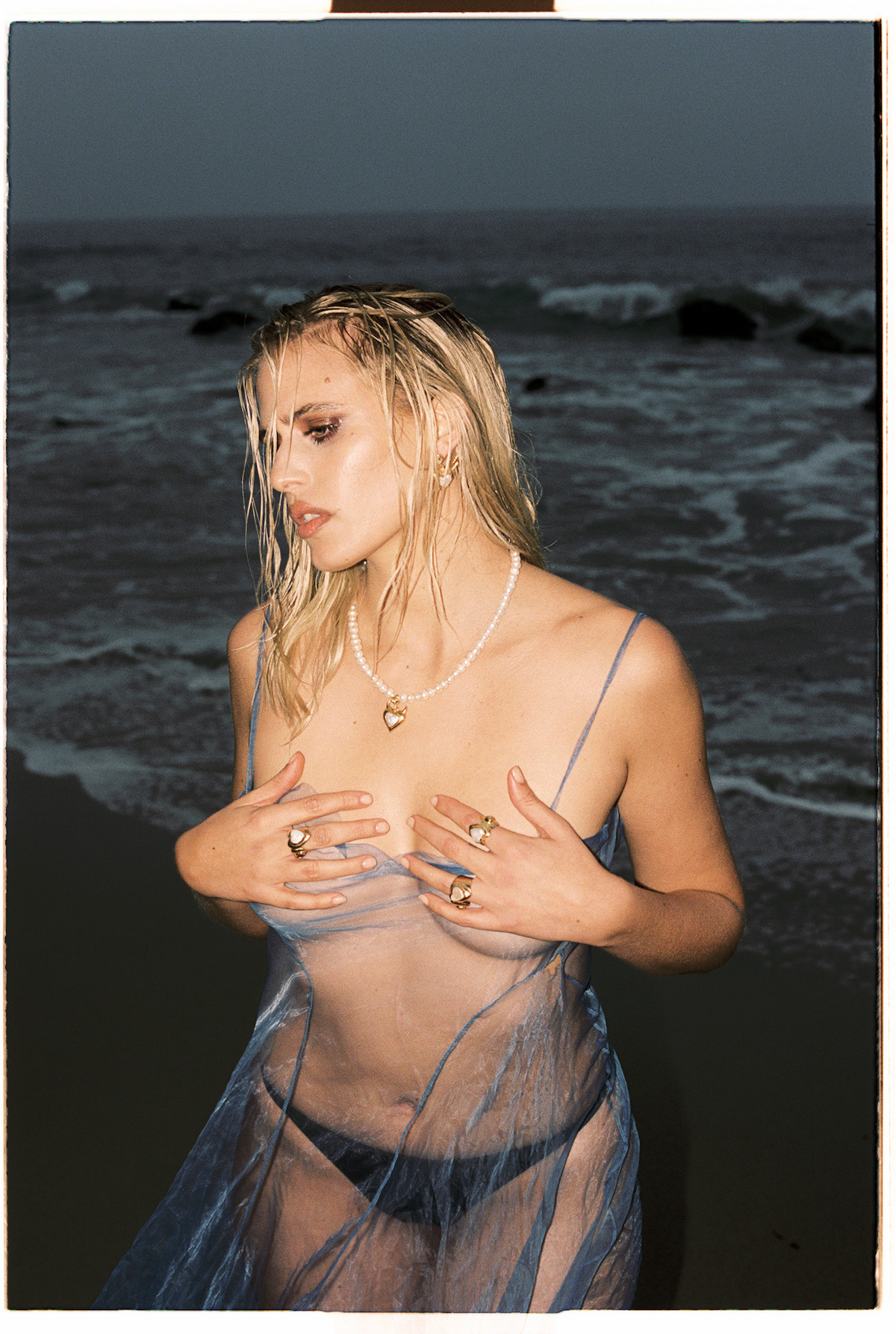
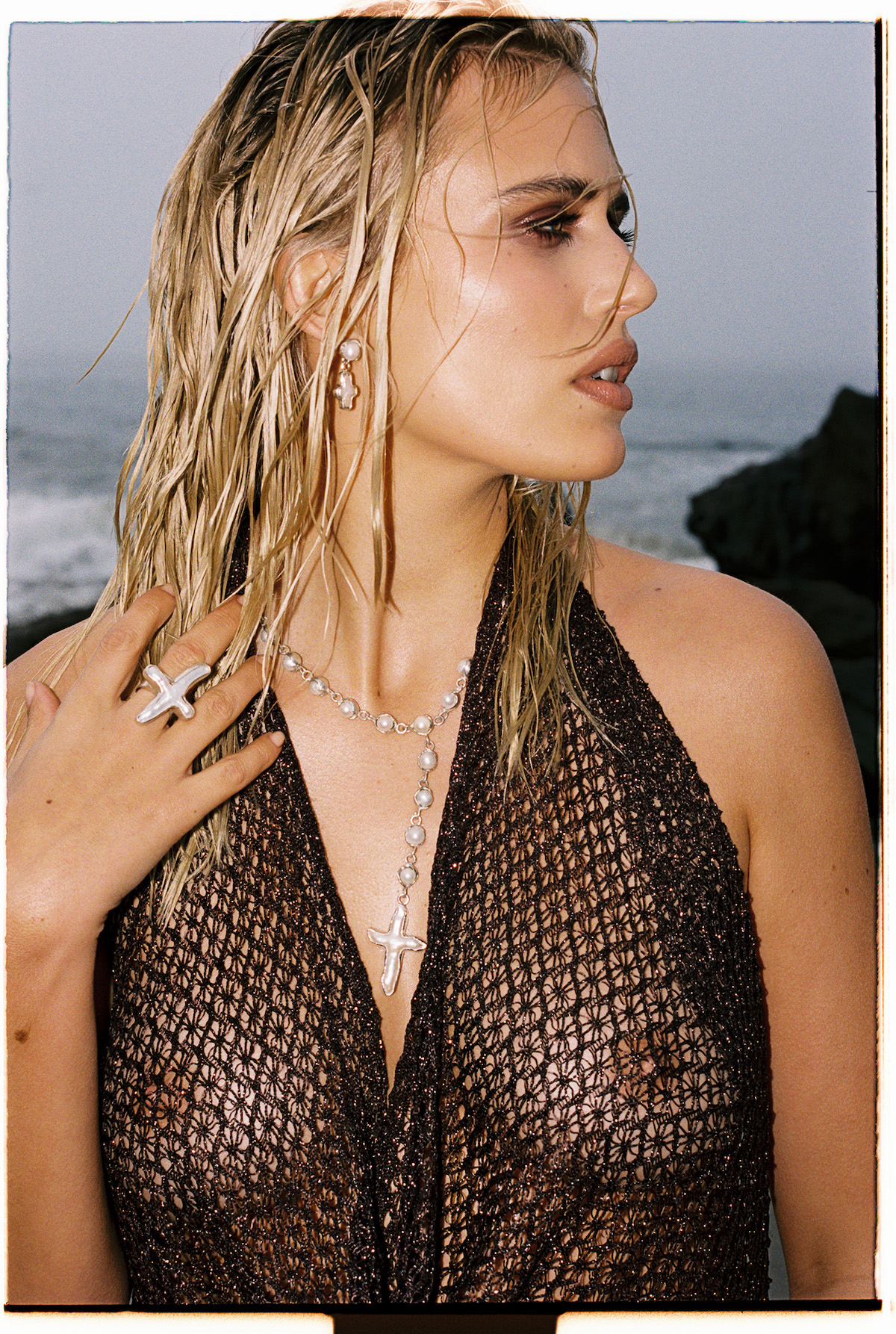
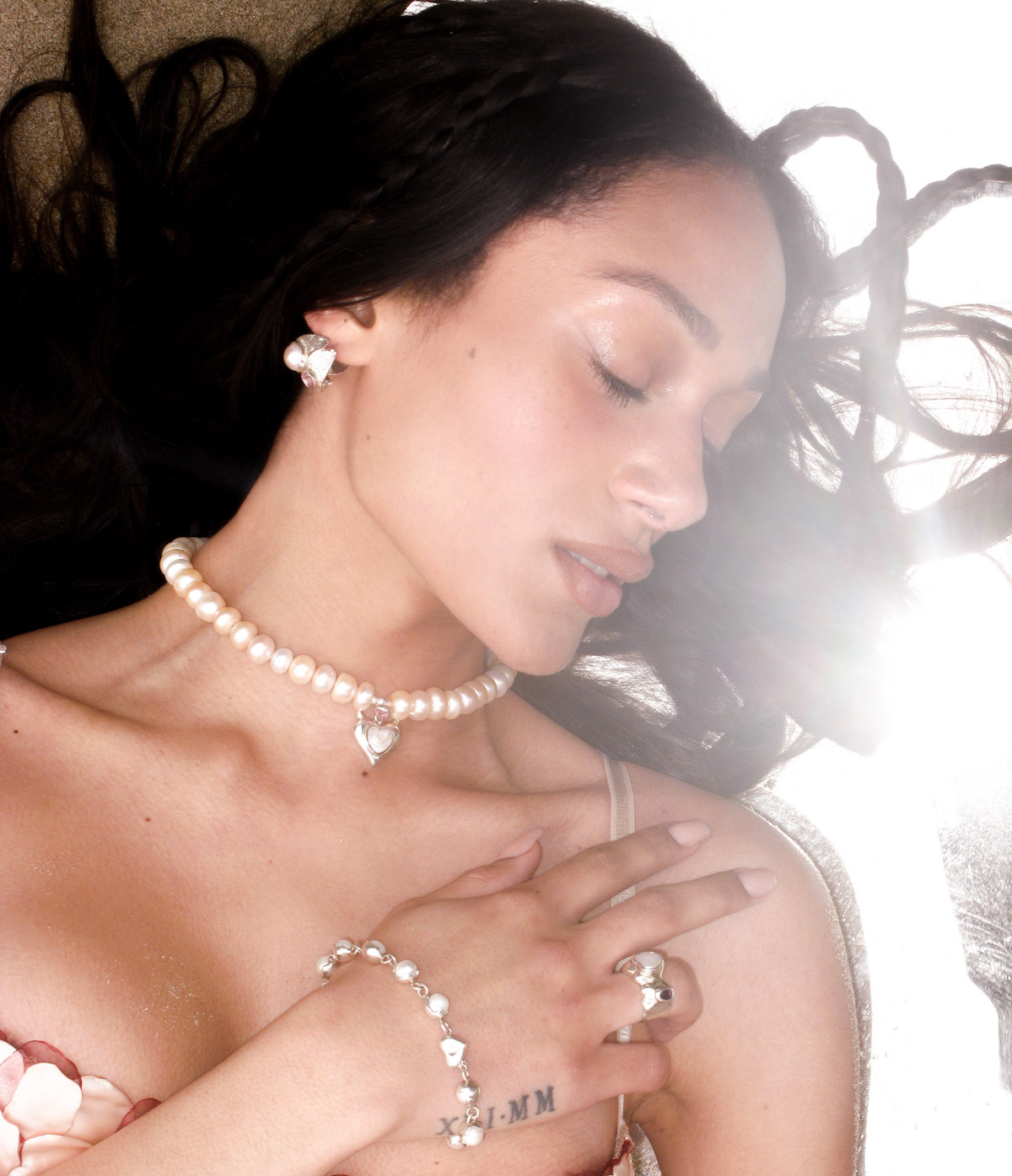
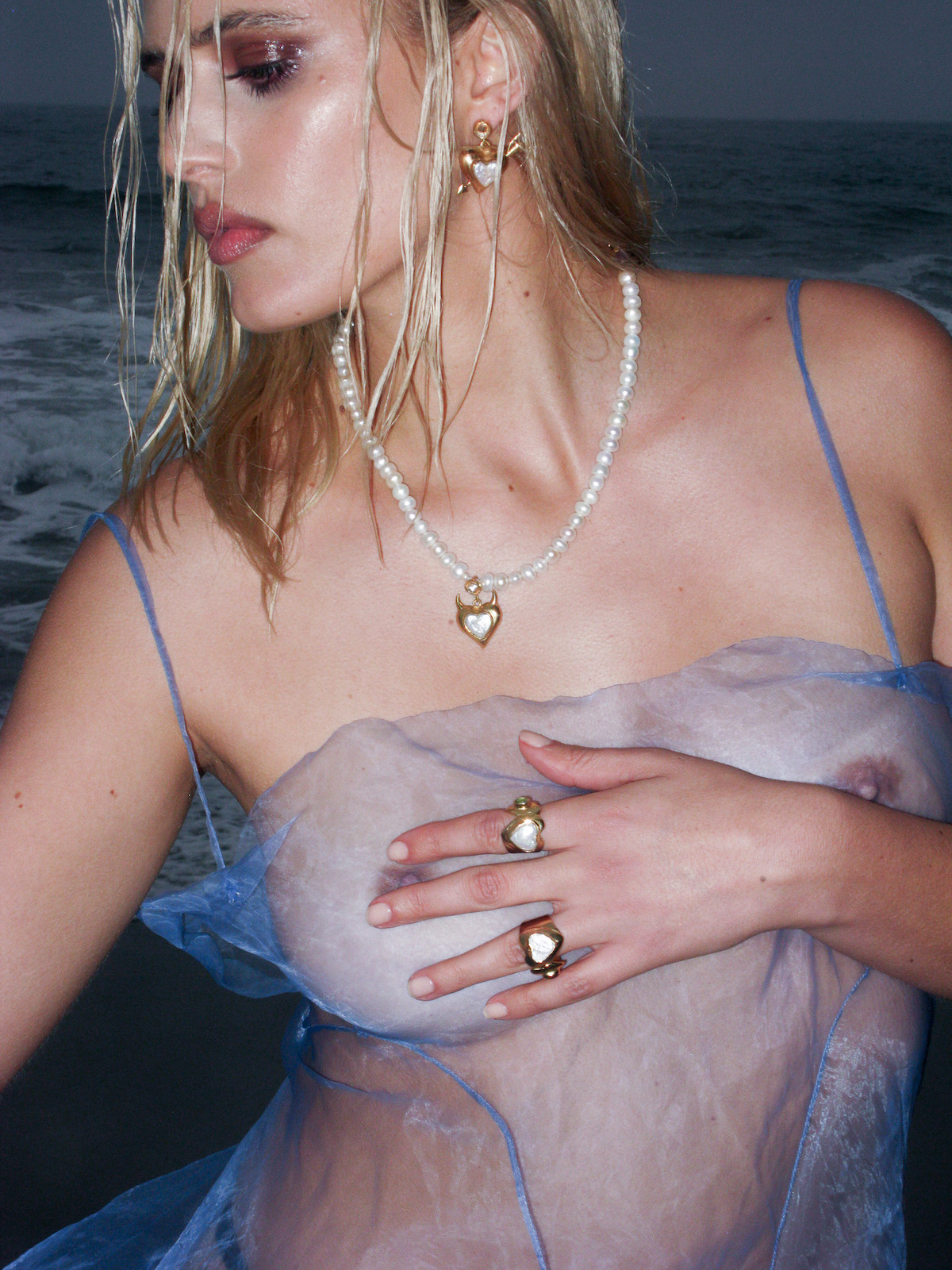
Mudd Pearl: Venosa from Boma Iluma on Vimeo.
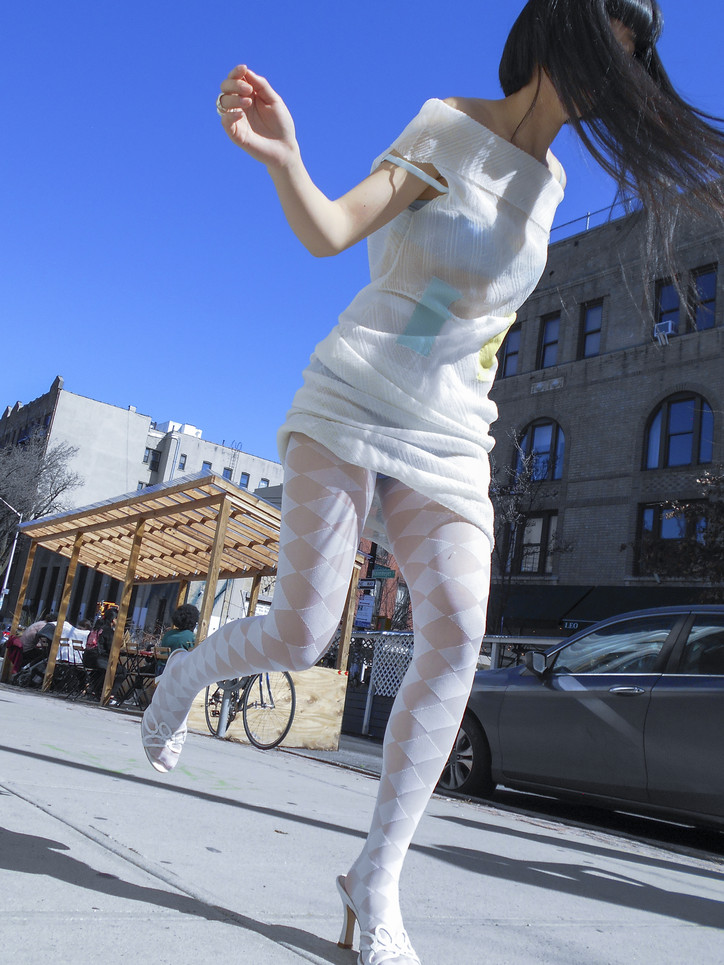
DRESS by ECKHAUS LATTA, LINGERIE by ARAKS, TIGHTS by SHEERLY TOUCH-YA, SHOES by MAILE, RINGS by DUNTON ELLERKAMP, BRACELET by EARTH ANGELRY, BAG by BRANDON BLACKWOOD
office spoke to Serena about the serendipitous story of the brand, the emotional and practical weight of running an intergenerational business, how it ties in with her own art practice, and the hosiery revival in fashion today. Read the interview below.
office — What are your earliest memories of Sheerly Touch-Ya? Do you remember watching your father work as a kid? What are the snapshots that spring to mind from those early years?
Serena Chang — That's a fun question. I mean, there's a ton. The brand used to be called Serena, before it turned into Sheerly Touch-Ya, so I just remember seeing my name all over these packages, which was pretty wild. Originally, my parents were renting a warehouse in Maspeth, Queens, and there'd just be piles and piles of pallets filled with hosiery boxes. As kids, whenever we weren't in school, we'd be at the warehouse, climbing all over the boxes and making forts and little cities within them.
And then later when I was in middle school, I remember being so embarrassed when we’d go back-to-school shopping because my dad would head straight to the lingerie hosiery section of the department store. He'd be picking everything up, stretching it, observing all the materials and comparing what's on the market. And I would just be like, Oh my god, this is mortifying.
I can imagine! That’s funny about the name, too. So what came first, Serena the brand or Serena the daughter?
Well, I was born in ‘89 and my dad started the business in ‘92, so I did! I was three years old at the time, the only daughter of four kids. I guess it was a sweet, if slightly strange tribute to me. But there was a jeans company called ‘Serina’ and they sued my dad so he had to change the name. He went back into this Hanes archive of defunct brand names and found Sheerly Touch-You, and just changed it to Sheerly Touch-Ya. So that's where that came from! Again, I used to be pretty embarrassed by the name, being dropped off at school in the company van. But as an adult, I think there’s something kind of special and weird and accidentally cool about it.
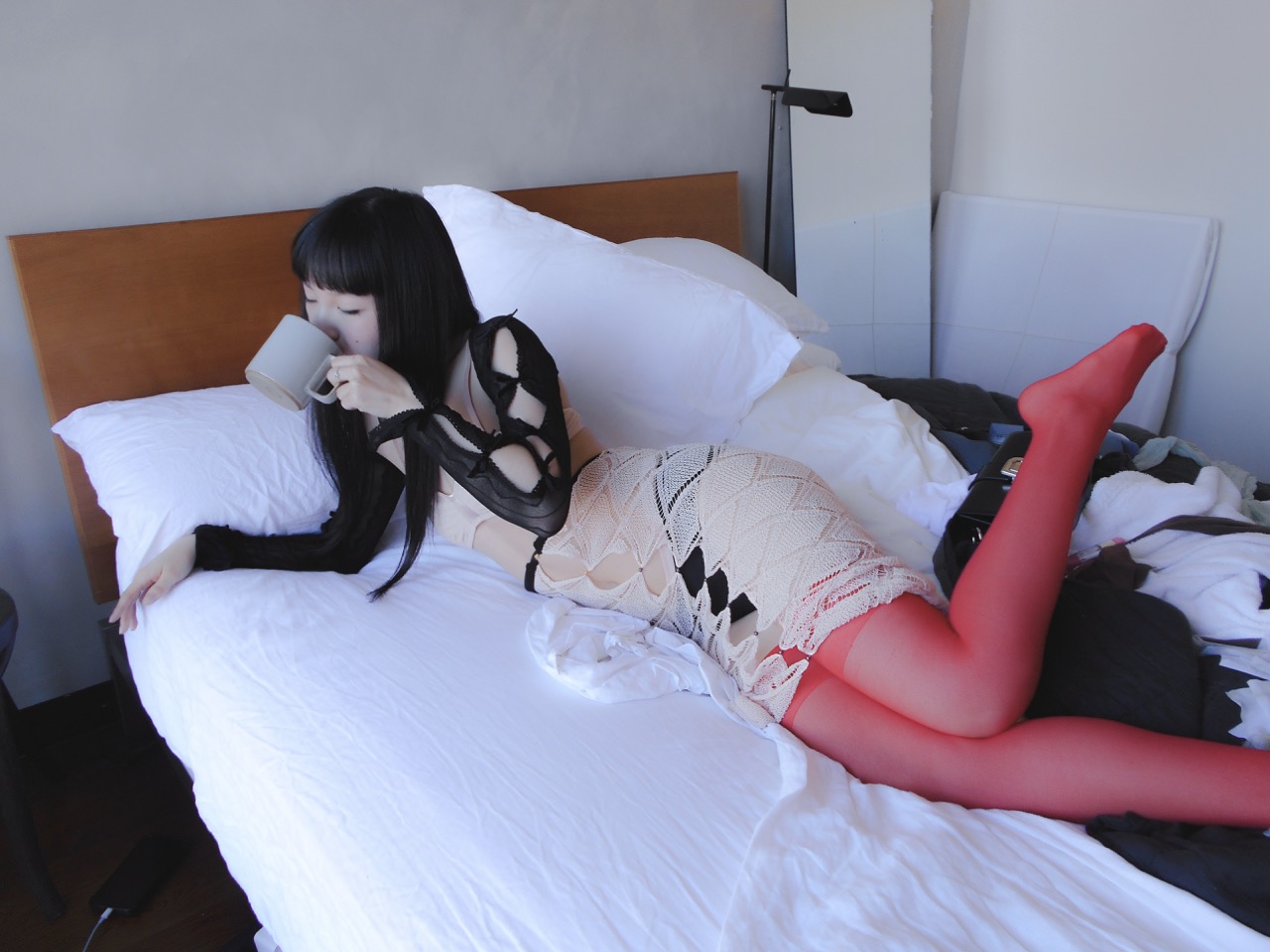


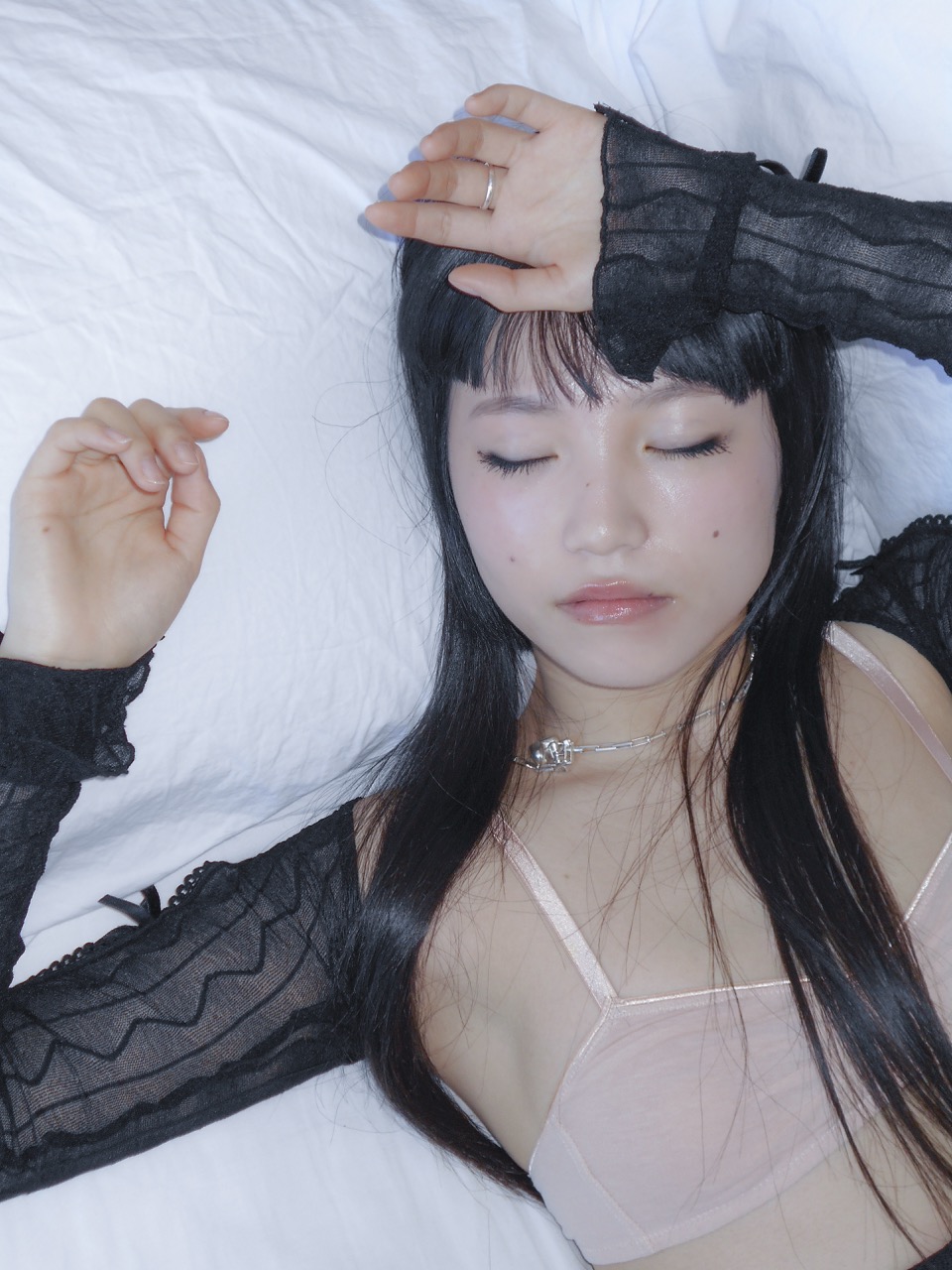
It sounds like there were a lot of serendipitous moments in the founding of the company, including the stock your dad was sent on a whim. Does he ever reflect on how it felt to emigrate alone and start his own company from scratch?
Oh, for sure. He came from nothing, you know, from the countryside of southern Taiwan, with basically no money. His mom was selling vegetables from their farm on the side of the road to get him the funds to go to school in America. So when he talks about his story, he's always like, It was my American miracle that this could even happen. And that he was able to make it happen through hosiery of all things! I think hosiery was just a means to an end. It was all just random circumstance.
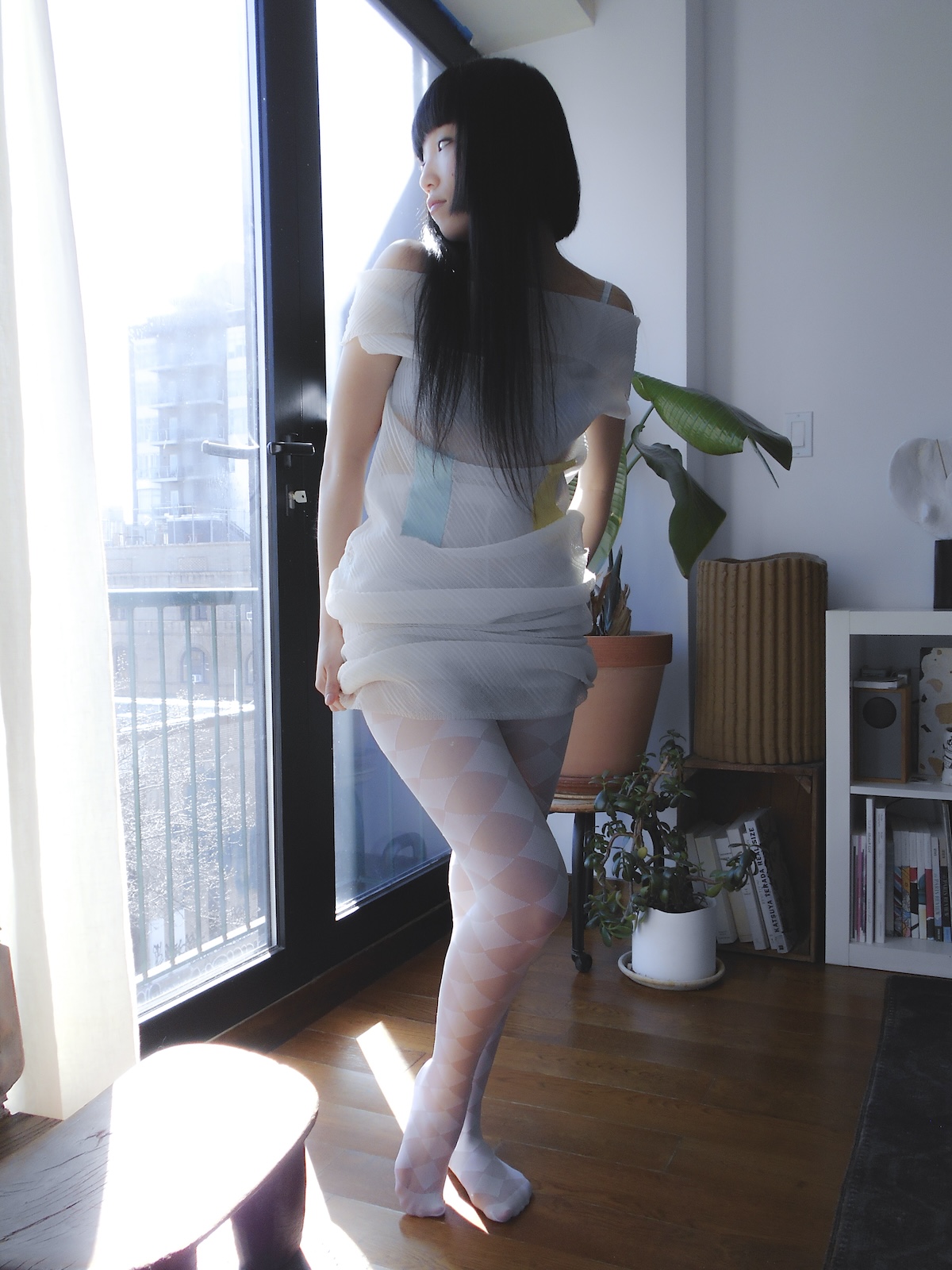
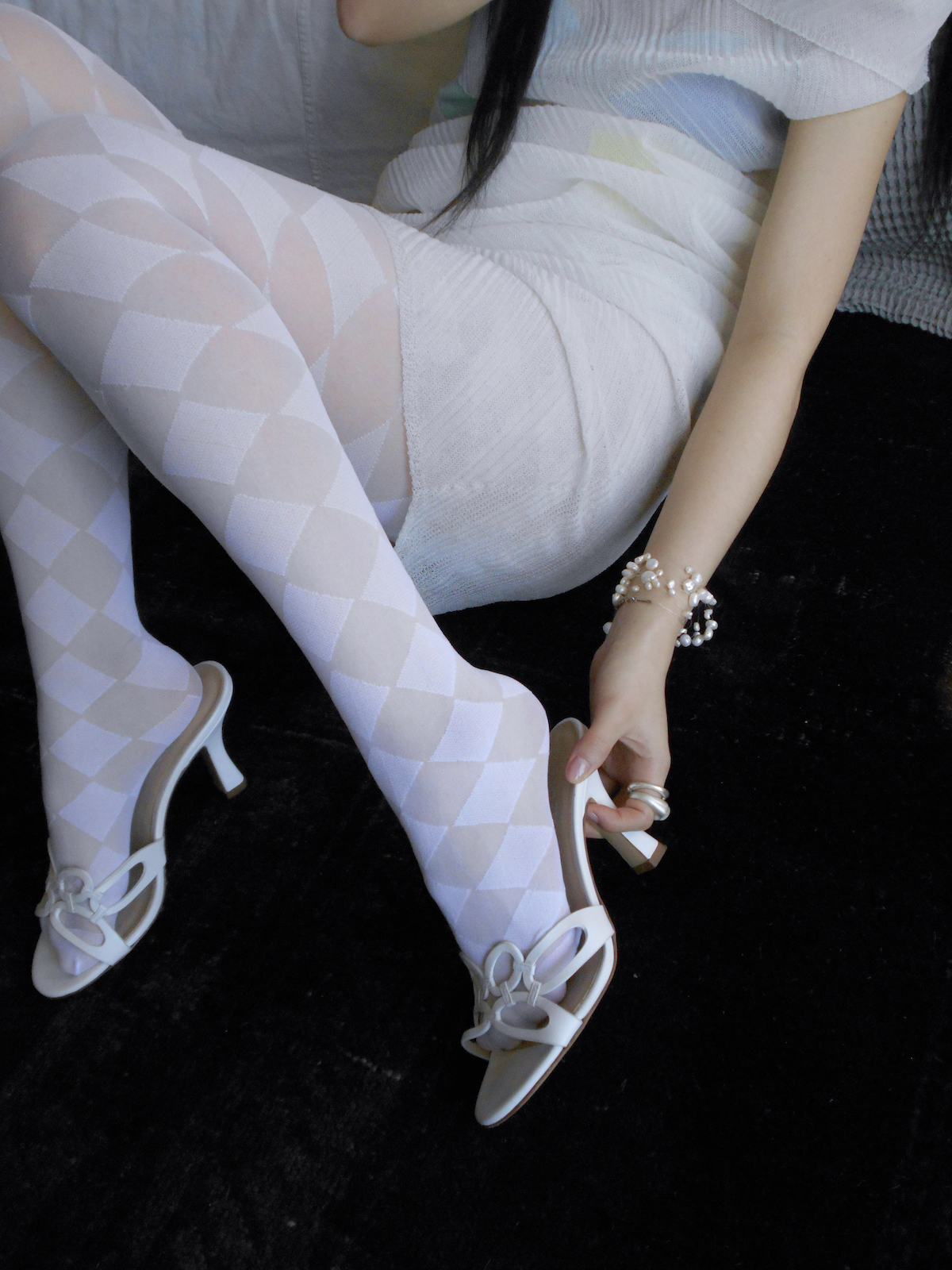
DRESS by ECKHAUS LATTA, LINGERIE by ARAKS, TIGHTS by SHEERLY TOUCH-YA, SHOES by MAILE, RINGS by DUNTON ELLERKAMP, BRACELET by EARTH ANGELRY, BAG by BRANDON BLACKWOOD
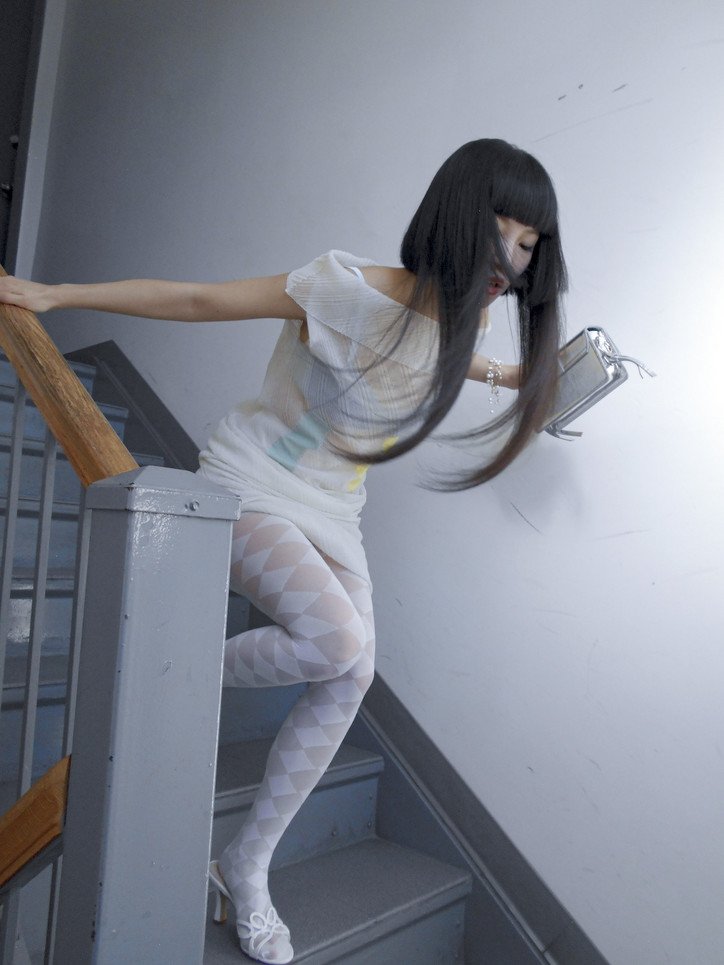
With all of that in mind, how are you approaching the company today? What changes have you made to the way it's being run, and to the designs?
So today we produce new quality hosiery and also upcycle dead stock, and the majority of the production is still done in Taiwan. When I took over, I was wracking my brains about how to rebrand while also maintaining the essence of what Sheerly Touch-Ya is and how it came to be. I’ve actually decided to keep all of the packaging and designs the same. I feel like a lot of fashion today is so polished, and I didn’t want that. It's more about updating the aura around the brand, to present it within a contemporary context.
My whole idea for social media was just to have ordinary people wearing this stuff, taking selfies at home. I wanted it to feel authentic and real and accessible, because that is what this company was built on. Historically, a lot of the stock was sold at mom-and-pop shops and 99 Cents stores to working people all throughout New York City. I’ve also been introducing it to a new demographic, of course, so smaller boutique stores now carry it, and it’s been sold in galleries through art installations. It’s about putting it out there in different ways.
It’s an interesting time for you to be rejuvenating the brand, given the way hosiery has gone from fashion staple to statement in recent months. Tights and stockings took over the runway last year, for example, from Miu Miu’s no-pants look, to Gucci’s red fishnets, and Jacquemus’s lacey, floral tights...
Yes, it was kind of unintentional but perfect timing! I started noticing all these write-ups in magazines about the pantyhose-as-pants look, and the way the hosiery trend is growing among influencers. I’ve even been getting back into it too, wearing our tiger-patterned tights and embracing these flocked styles. Sheerly feels like this special archive and inventory of pantyhose designs and processes from the 90s. It’s interesting how it all comes back around.
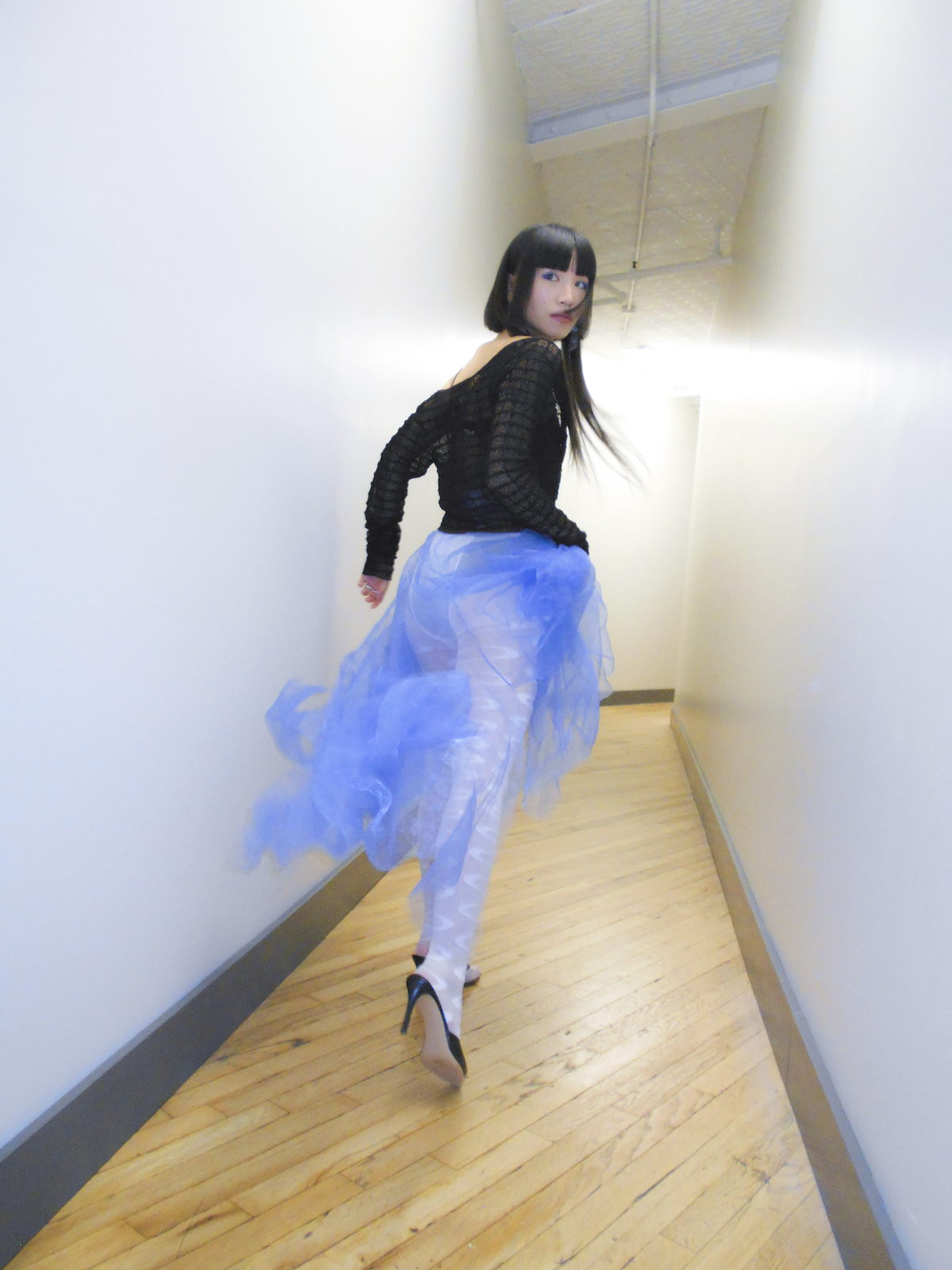
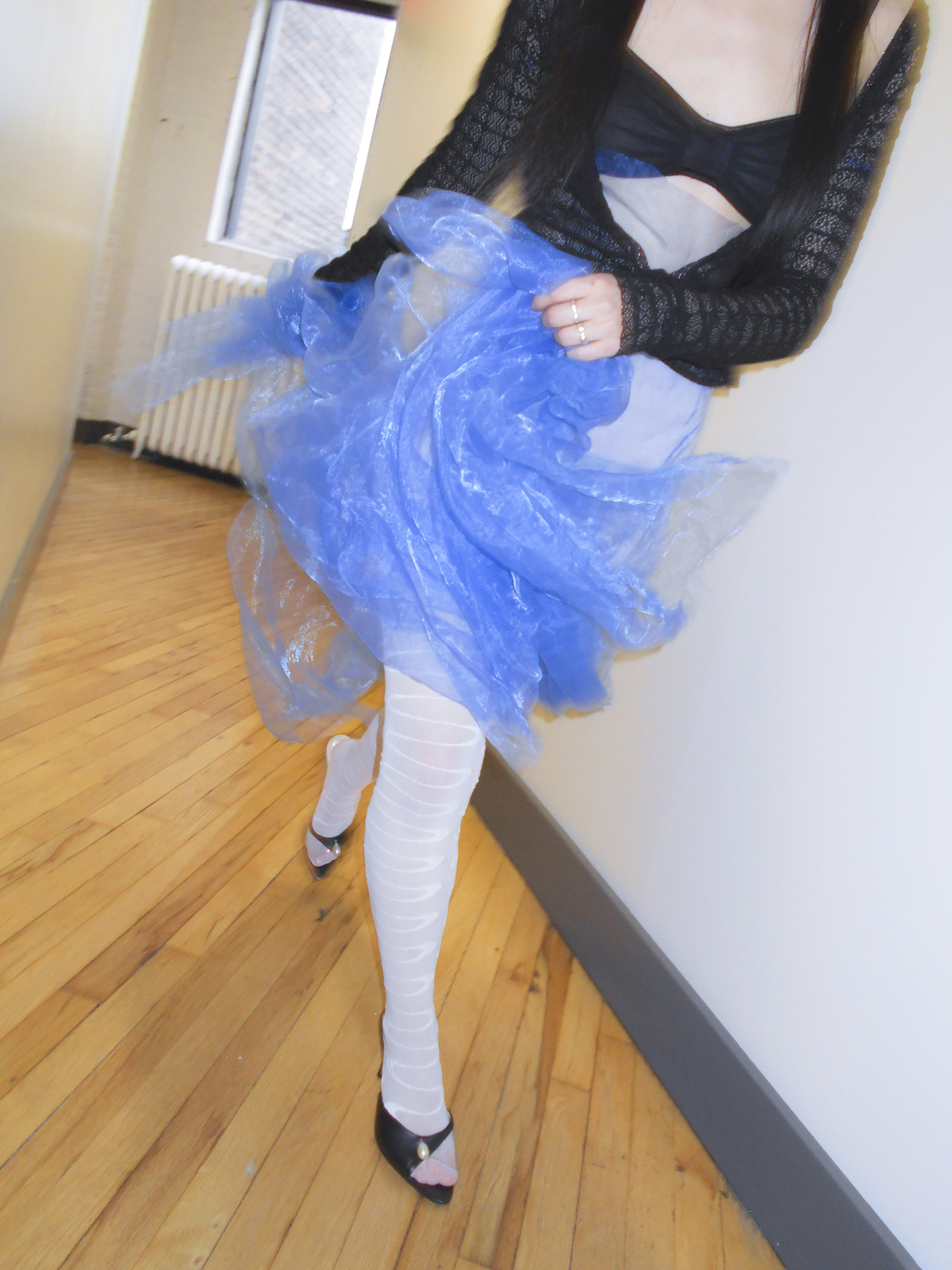
TOP and DRESS by GAUNTLETT CHENG, LINGERIE by ARAKS, SHOES by MAILE, EARRINGS by CAROLINE ZIMBALIST, RINGS by DUNTON ELLERKAMP
Did you always intend to work with the brand, or did it take some convincing? Did your dad really want you to take over?
Oh yeah, he wanted it hardcore for his children. I think that’s pretty common among immigrant families (my younger brother also helps out with the business). I was resistant for a time, but because of my own art practice, it felt like a natural step when he decided to retire. I’ve always been interested in the creative side of it — a lot of my work is about recontextualising and reappropriating hosiery imagery, and the symbolism of immigration, acculturation, work, manufacturing, labor. I guess I also have Sheerly to thank for my own introduction into sculpture fabrication.
Could you expand on that?
It’s a funny story, which also feels very old New York in a way. So back when my dad was learning the ropes at Marathon Hosiery, it was stationed at a warehouse in Red Hook, Brooklyn. Eventually, the owner of Marathon Hosiery left the space and rented out the warehouse. His first tenant was Urs Fisher, the sculptor. I was graduating from art school at the time and was having difficulty finding work. The owner offered to put us in touch. I called Urs’ number and ended up working for him for seven years.
It was an incredible learning experience. While working for Urs, I also met my business partner and we decided to start Shisanwu LLC, our sculpture fabrication studio. We’re now based out of the same warehouse as the Sheerly Touch-Ya company in Queens.
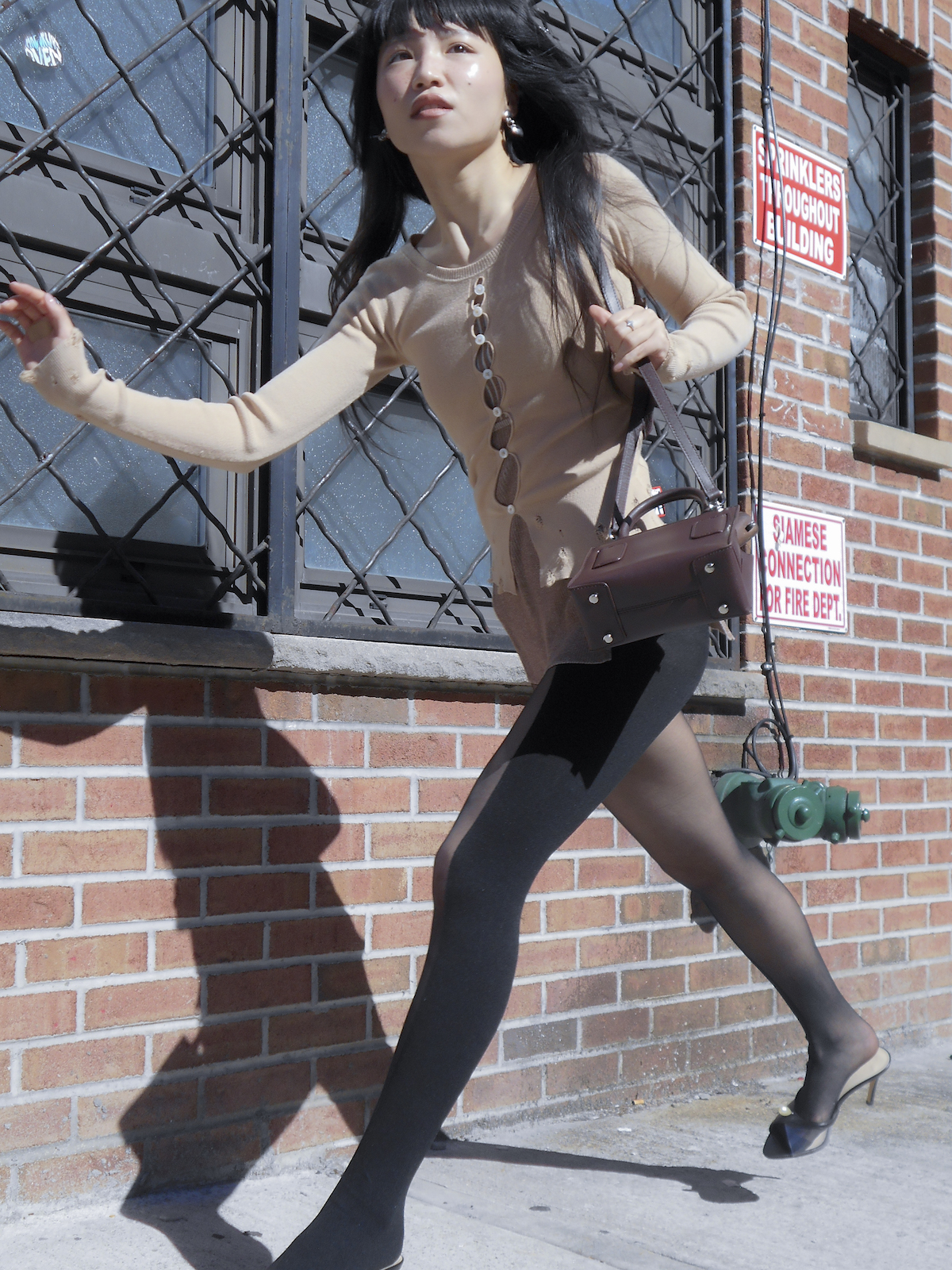

TOP by RUI, DRESS by FIND ME NOW, SHOES by MAILE, HAIR CLIPS by EARTH ANGELRY, EARRINGS by LAURA LOMBARDI, RING by EARTH ANGELRY, BAG by BRANDON BLACKWOOD
And you have an art exhibition coming up soon, right? How did that materialize, and what’s the focus?
So myself and two friends decided to create a collective called Lunch Hour, which explores and critiques mythologies around authorship, work, and labor, and renegotiates terms of value within the industry. Our upcoming group show is about addressing the realities we’re in right now with work and labor. How there’s this huge division between wage labor and personal creative practice; how you have to have a full-time job and then pursue your own art in your off-time, but is that even seen as work? And how we’re all conditioned to do creative work for free because value isn’t really tied to it.
Yeah, that really resonates with the fields of writing and journalism as well. This perpetual need to balance editorial with commercial just to make rent.
Exactly! So it’s a show that addresses these shared sentiments between creative communities. But we’re staging it through the lens of hosiery manufacturing and art production. We’re exhibiting it at the warehouse, so installations will be nested into the working landscape; sculptures and film projections among rows of hosiery boxes.
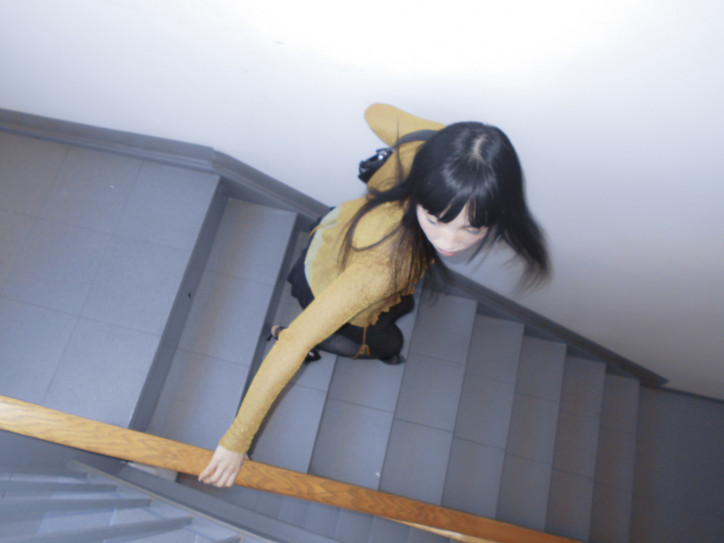
TOP by GAUNTLETT CHENG, SKIRT by ASHLYN, SHOES by MAILE, BAG by BRANDON BLACKWOOD
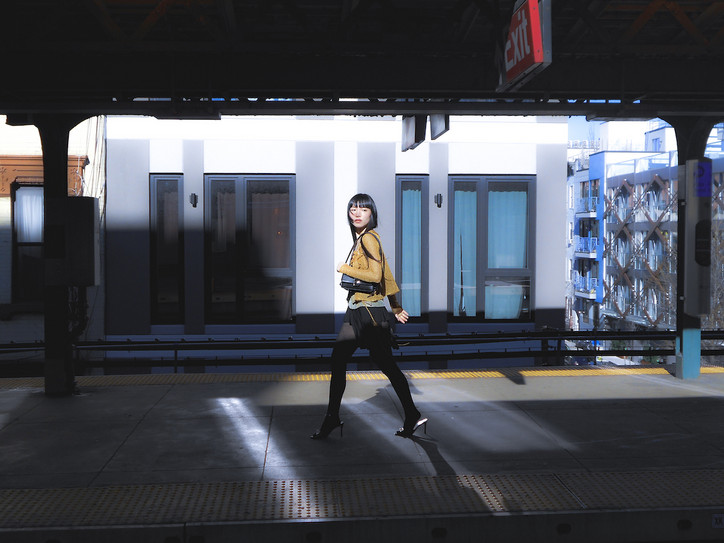
That sounds great. And the staging reminds me of what you said about making forts among the hosiery boxes as a kid — again, it’s all quite cyclical in a way. Do you feel a sense of pride in continuing your family business and making it your own?
Yeah it’s funny, it’s like half burden, half pride. But it’s definitely something I’ve been embracing and enjoying lately. It’s a really playful and satisfying way to collaborate with lots of different people. In the art world, you’re often in this bubble, whereas with fashion, I can bring my creativity to a wider audience and make it more accessible. I love how people can express themselves through these fun yet affordable stockings and tights. I want this strange pairing of contemporary art and hosiery to continue.
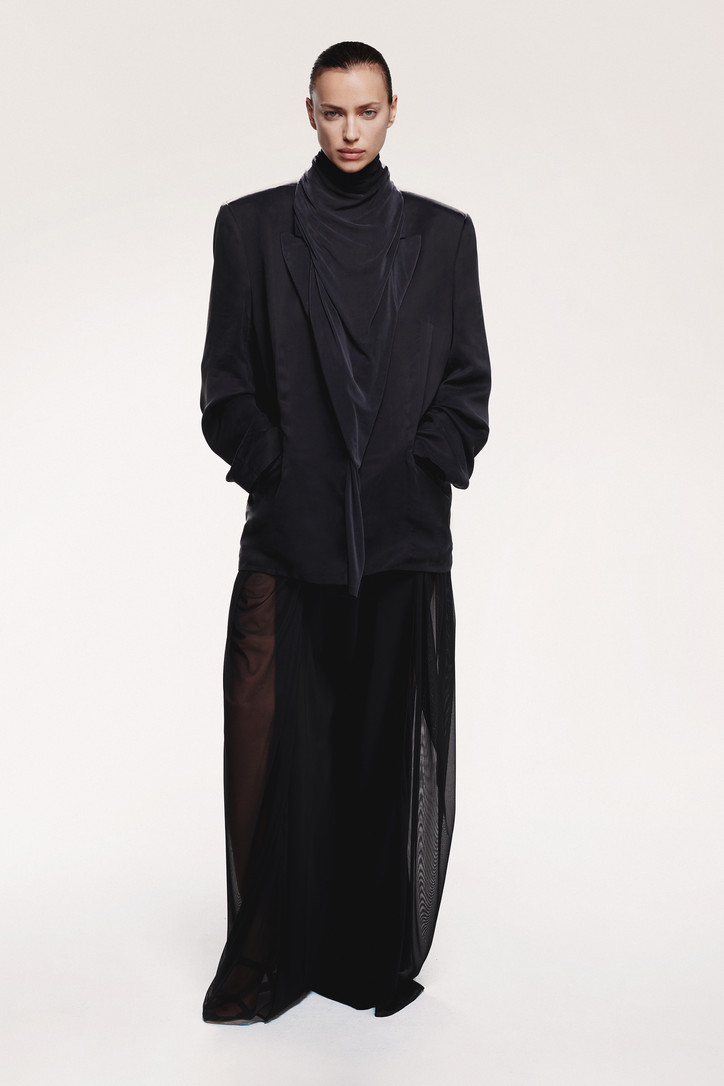
Of course, it’s not actually that simple. Citing uncertain times and financial strategy, the team voiced what many emerging and mid-level brands have shared in recent years. “Putting on a runway show entails significant costs, all for a brief 15-minute viewing experience,” industry commentator and critic Hunter Shires explains. “This reflects the broader trend of brands prioritizing cost-effective ways to showcase their collections, especially when they have other houses on their hands.”
Y/PROJECT’s latest work spellbinds beyond the need for a Paris catwalk – from invitingly oversize silhouettes in a grab-bag of denim and cargo, to a distressed denim maxi-dress that dares to drape in a dramatically tumbling fashion. Their expertise in shoes comes to the forefront with the release of the Y/PROJECT x Salomon Speedcross 3, timed with the launch of the FW24 collection. Boots in the familiar scrunch contour reappear, this time in gray shearling and jet-black leather with a bright sheen.
Avid murder mystery readers will appreciate the references to Umberto Eco’s The Name of the Rose. It's a moody, Middle Ages-timed work that is satisfyingly in line with the other influence Marten named: pleurants (that’s “weepers” to you), sculpted medieval figures representing mourners. Ashy tones and weighty hoods dotted on several looks visualize these references.
Where there's new material to subvert, splashy talent to cast, and the will to create originality in a landscape of conglomeration and fast fashion, Y/PROJECT will find a way. There was a narrow window of questioning that could have signaled something dire, but instead it appears the brand will close this season with a playful, recommitted wink, and the promise of something indestructible in the future.
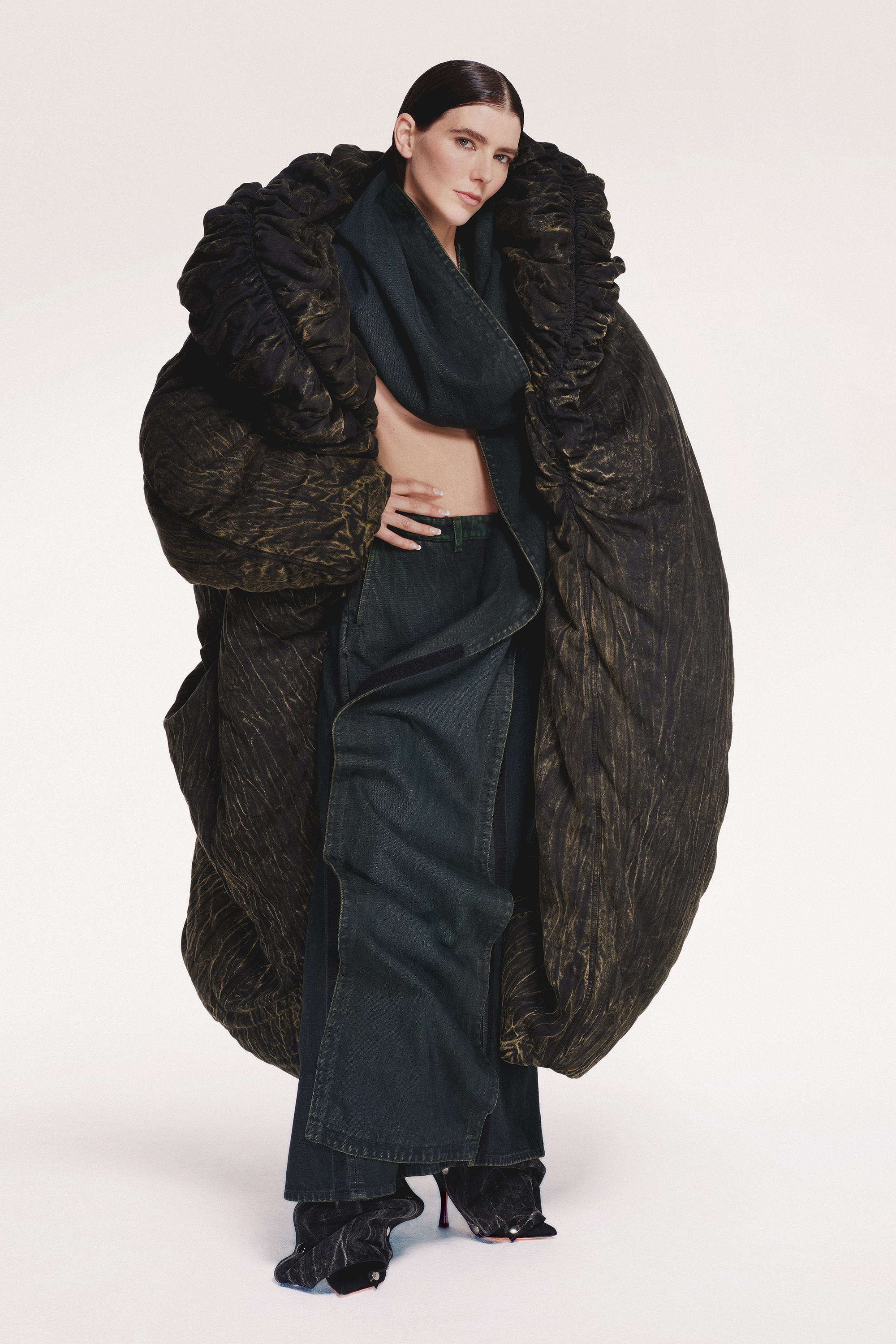
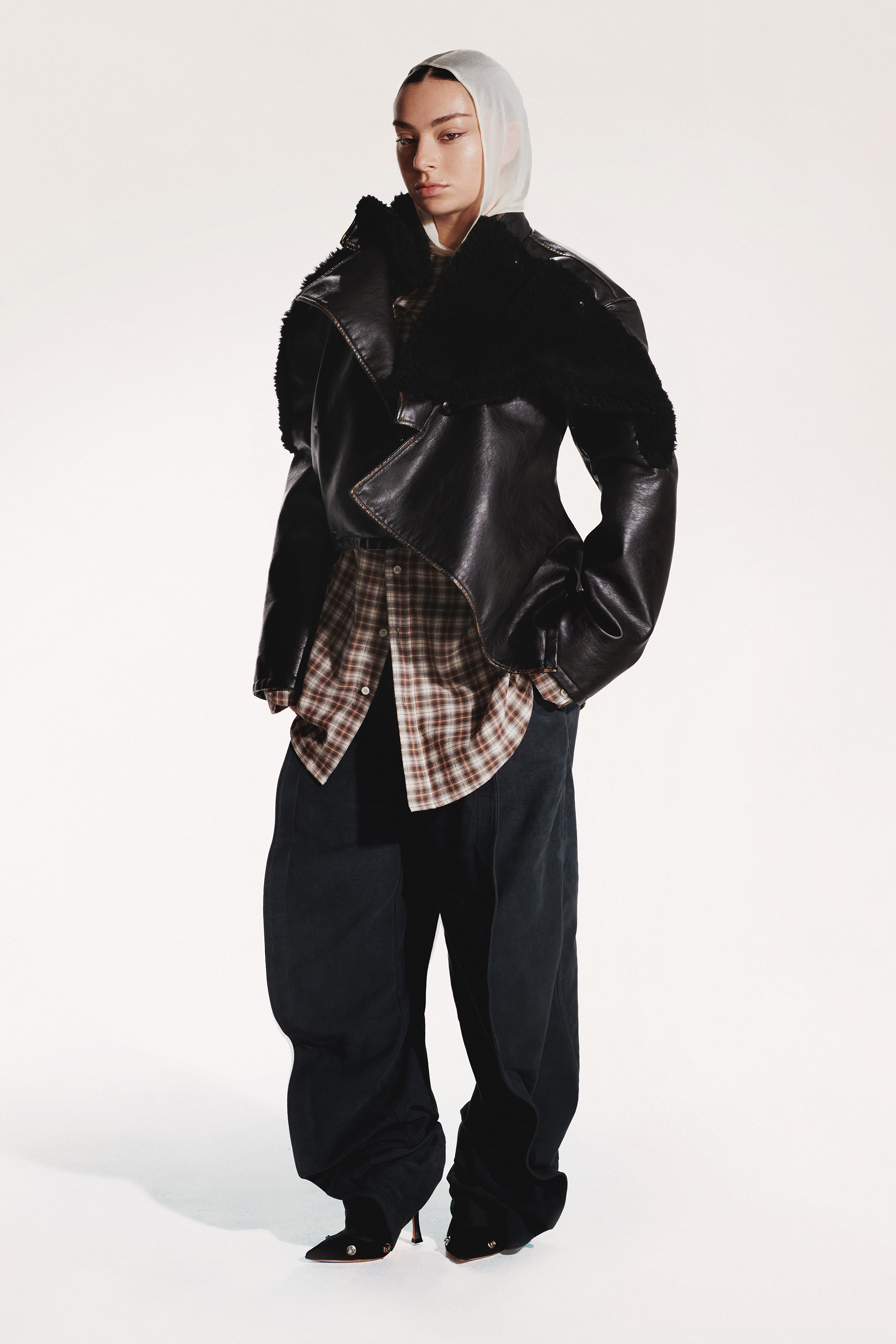

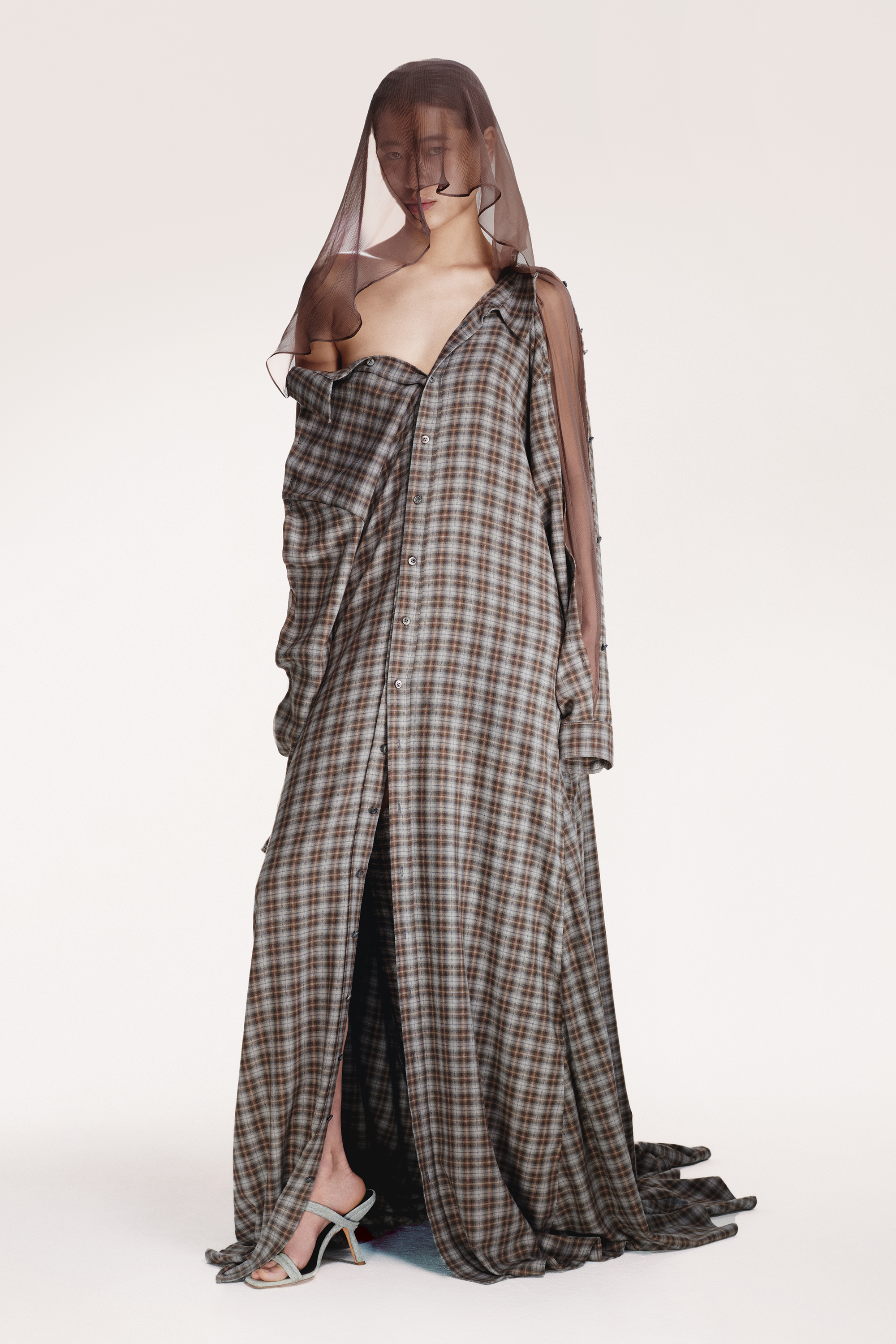
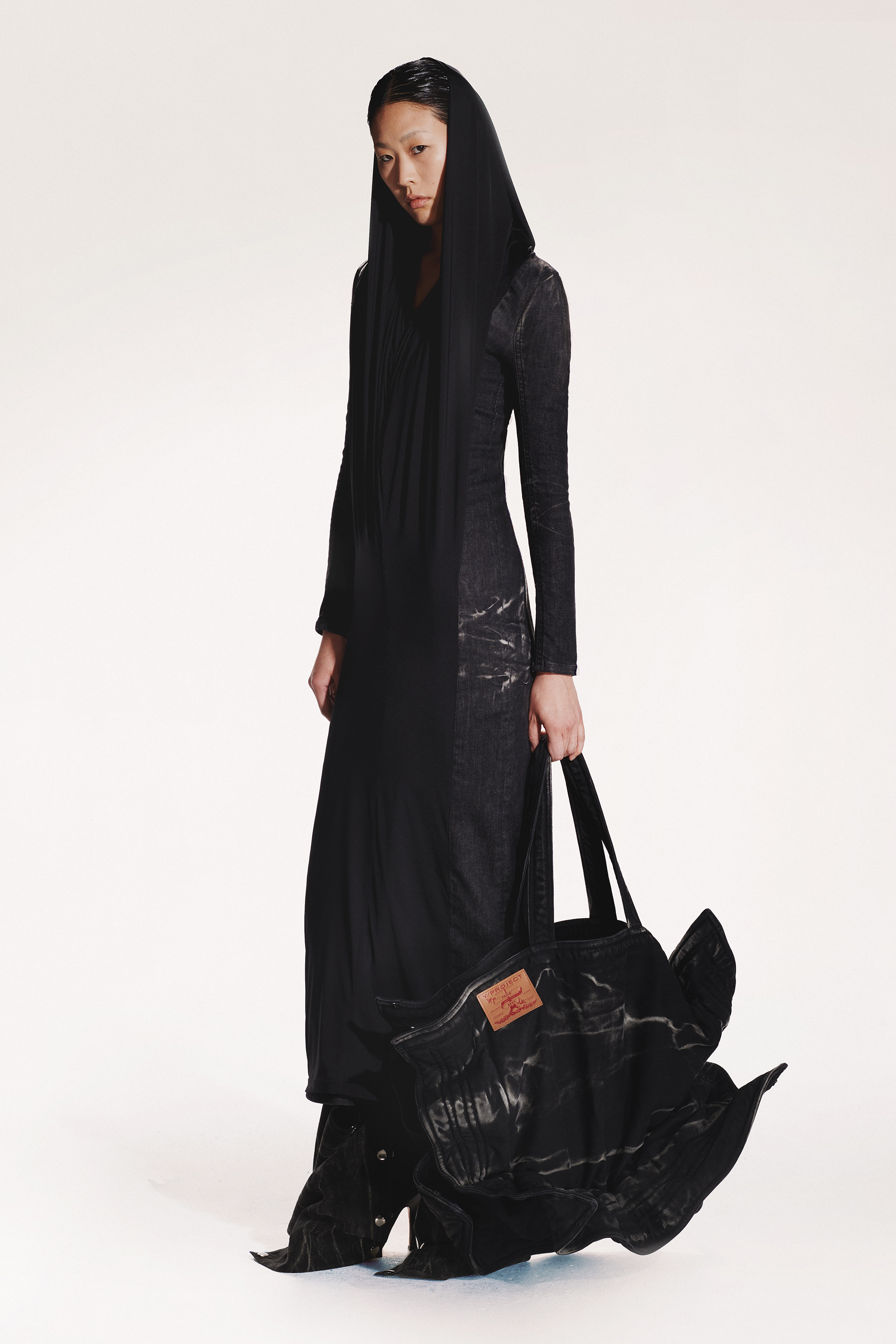
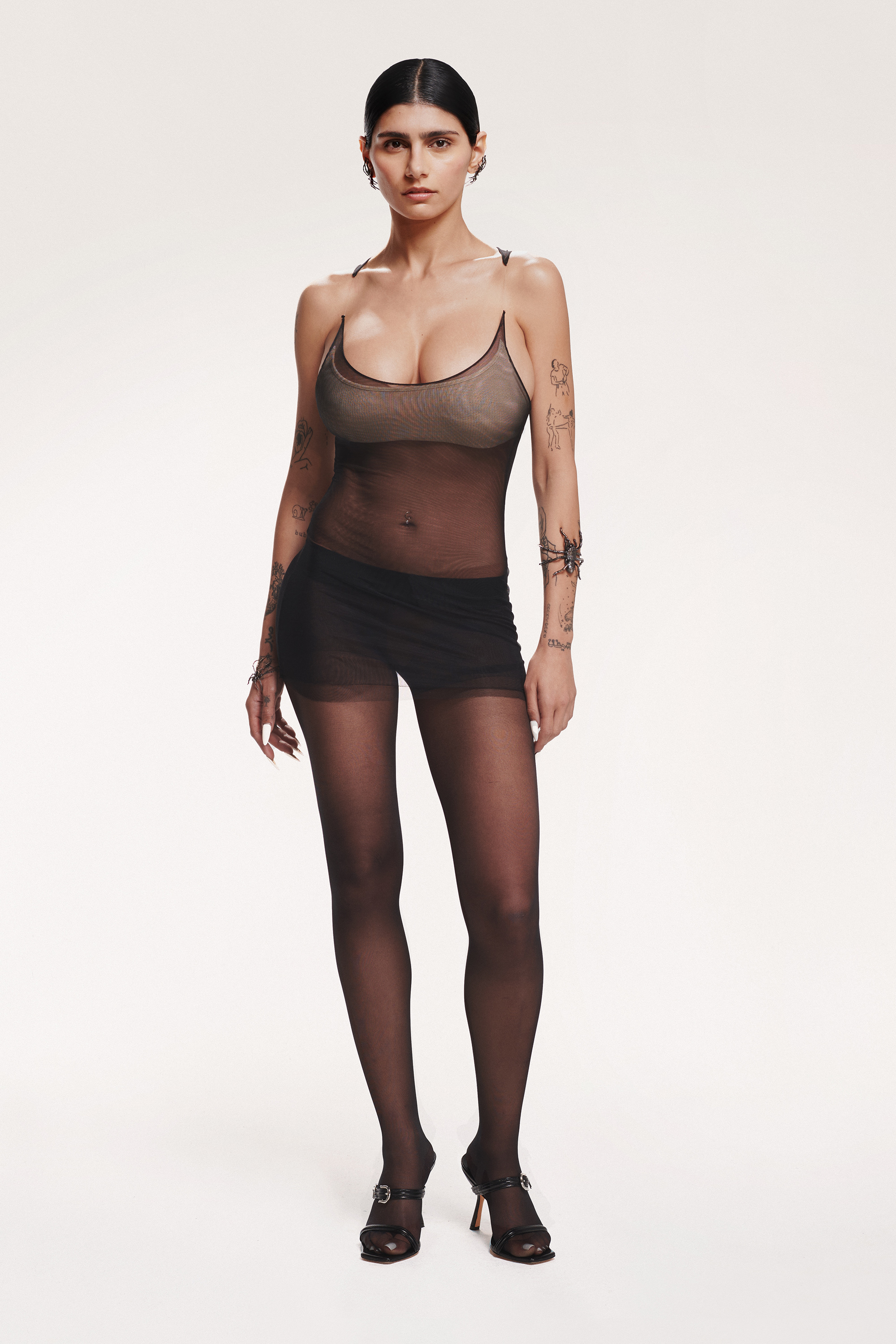
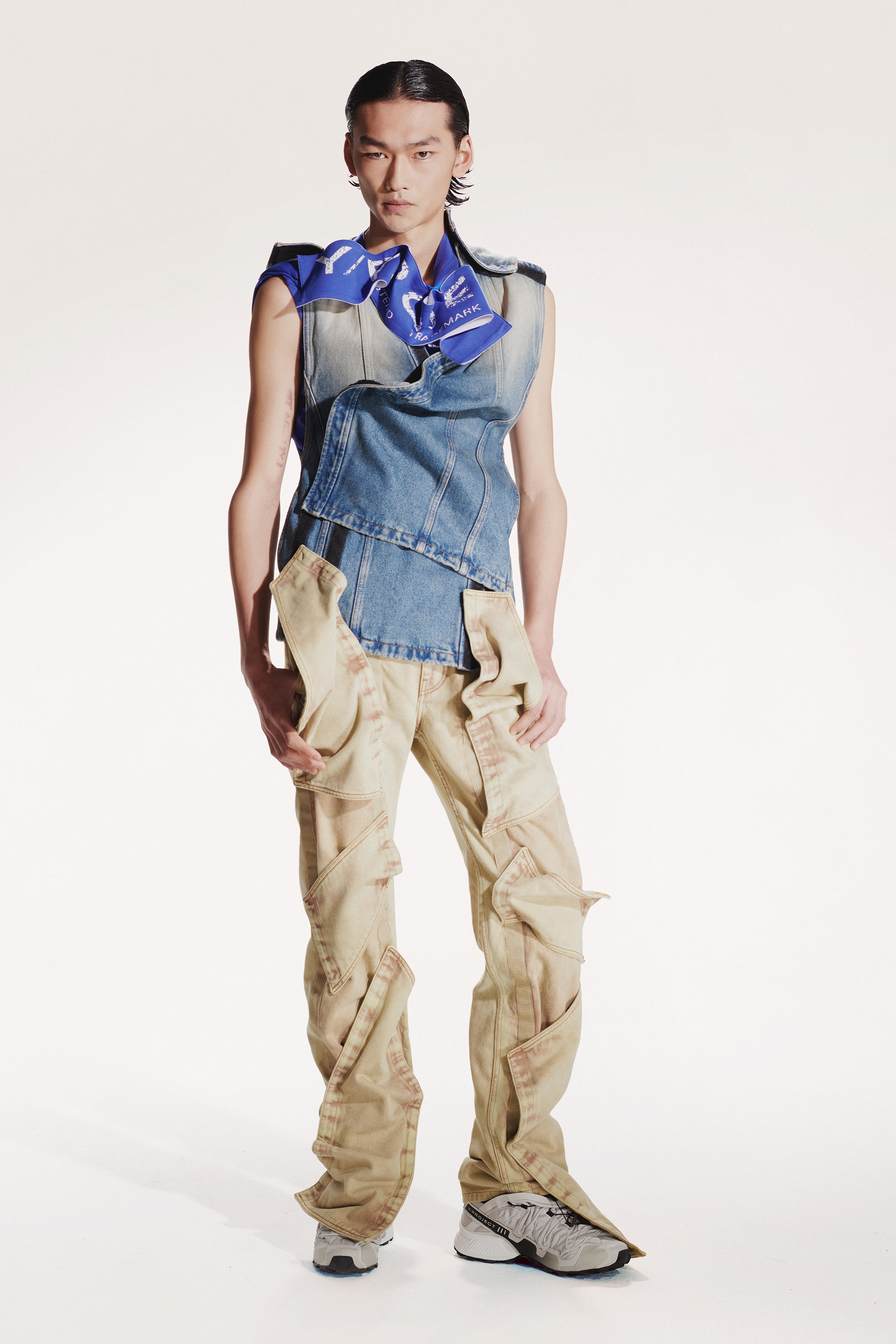
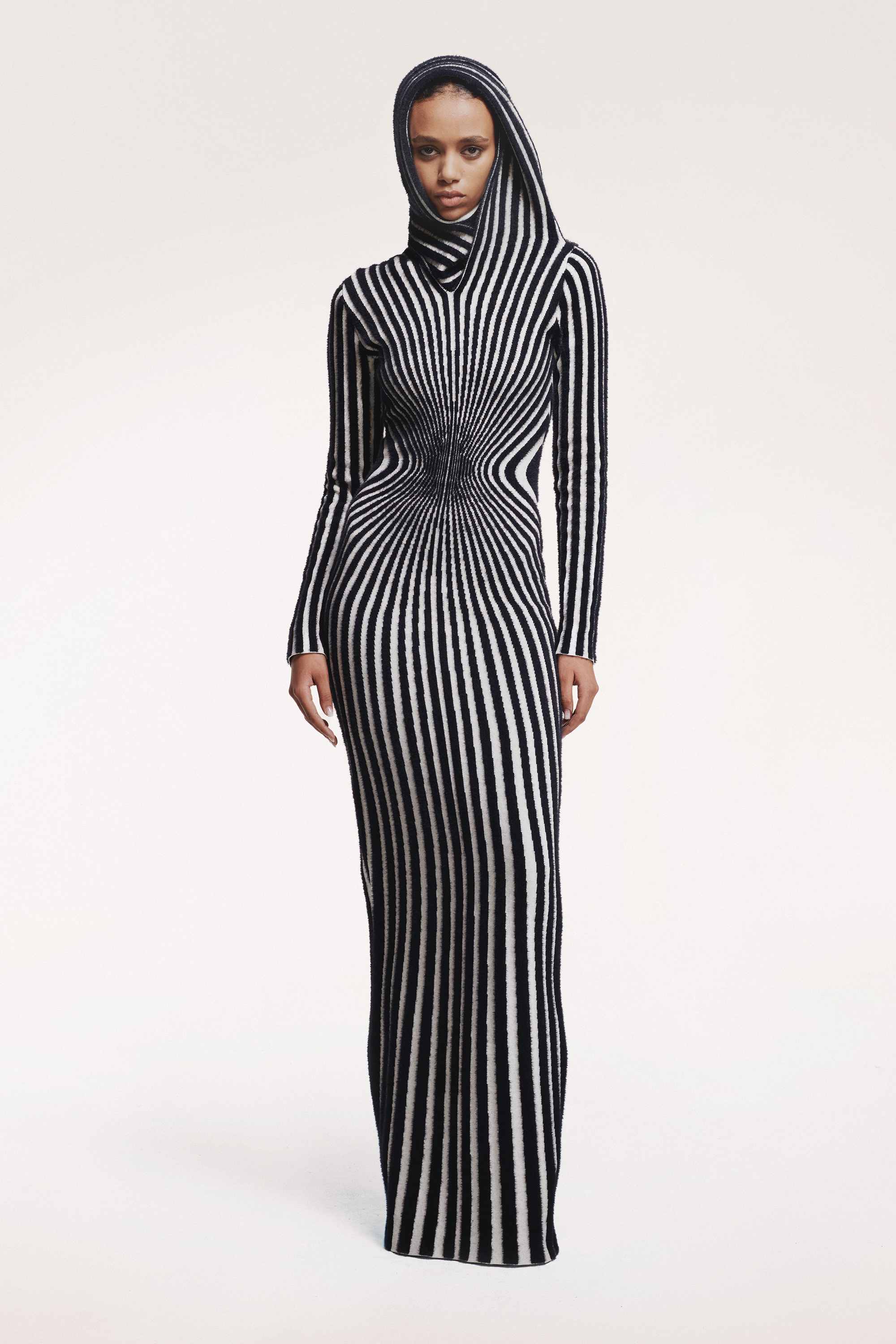
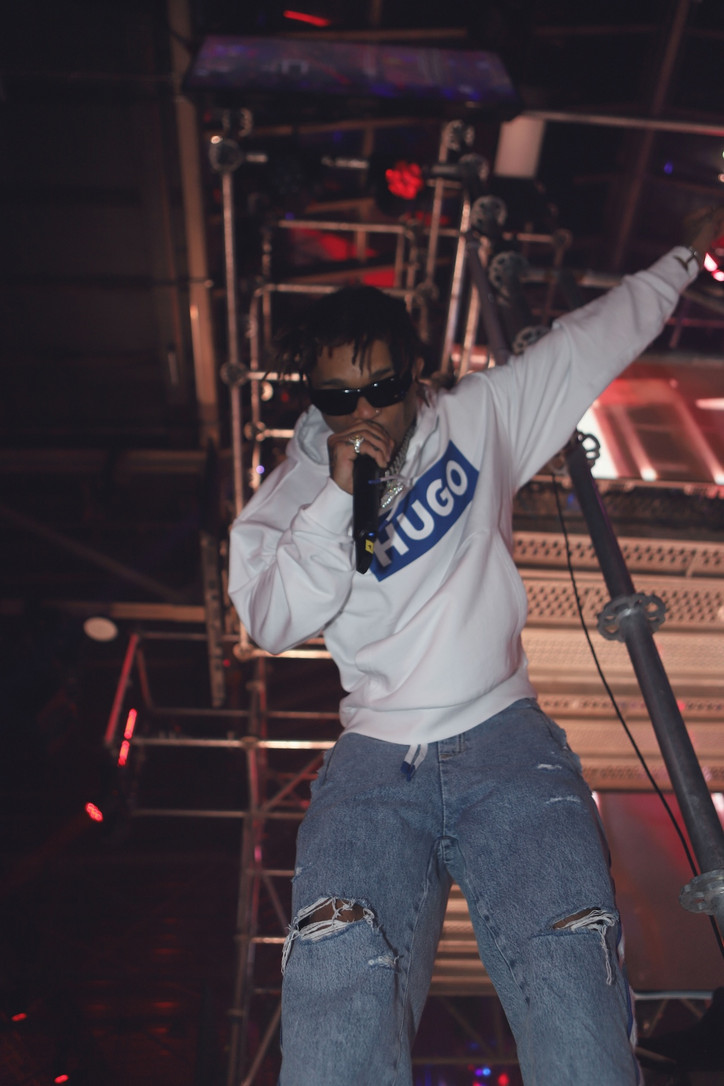
Inside, guests could personalize their HUGO Blue attire, with local artists Max Teutsch and Rafaella Braga offering customization options such as piercings, rings, or paint streaks. Prominent gamers like Clix and Chad Epps and stars from HUGO Blue's inaugural campaign, German rapper Reezy and British actor Jasmine Jobson, also joined in on the fun.
DJ Adam Port played from the cage tower, where Swae Lee later performed for the crowd, wearing HUGO Blue. Lee swung and jumped around, playing hit after hit from “Come Get Her” to “Sunflower" igniting dance circles among singing fans and a burgeoning crowd of HUGO influencers taking videos and sharing the moment, expanding its reach beyond the confines of the venue.
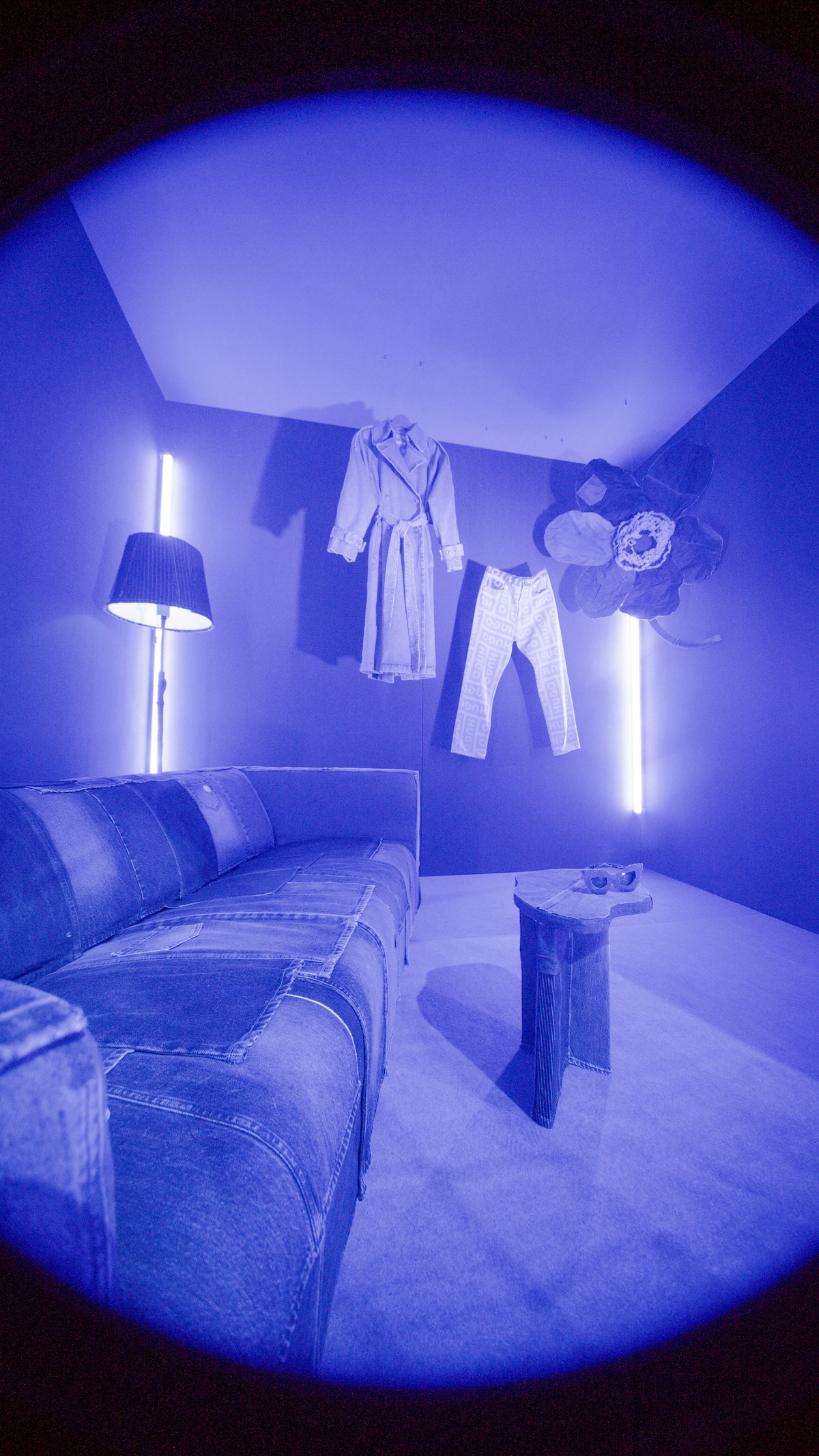
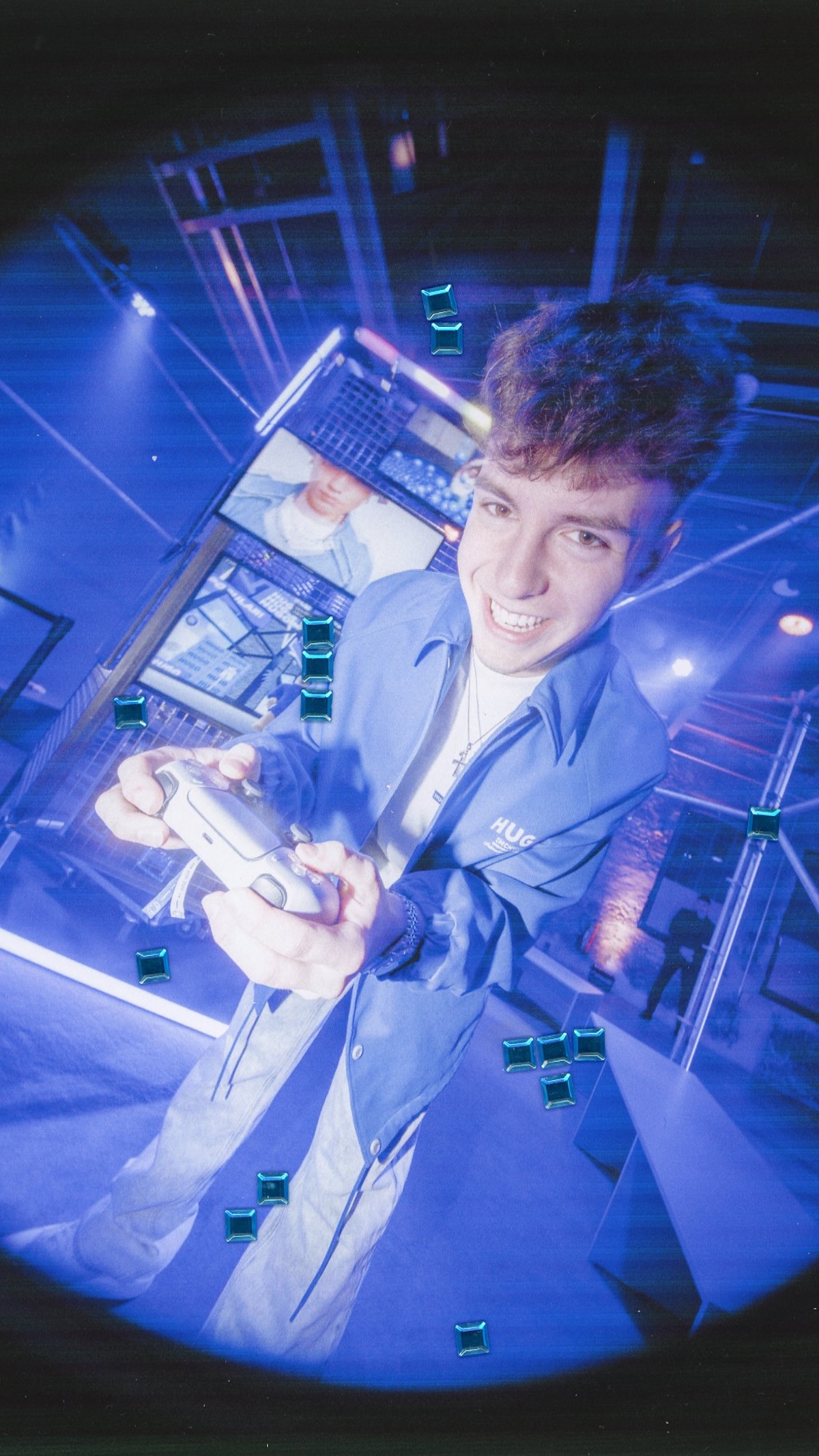
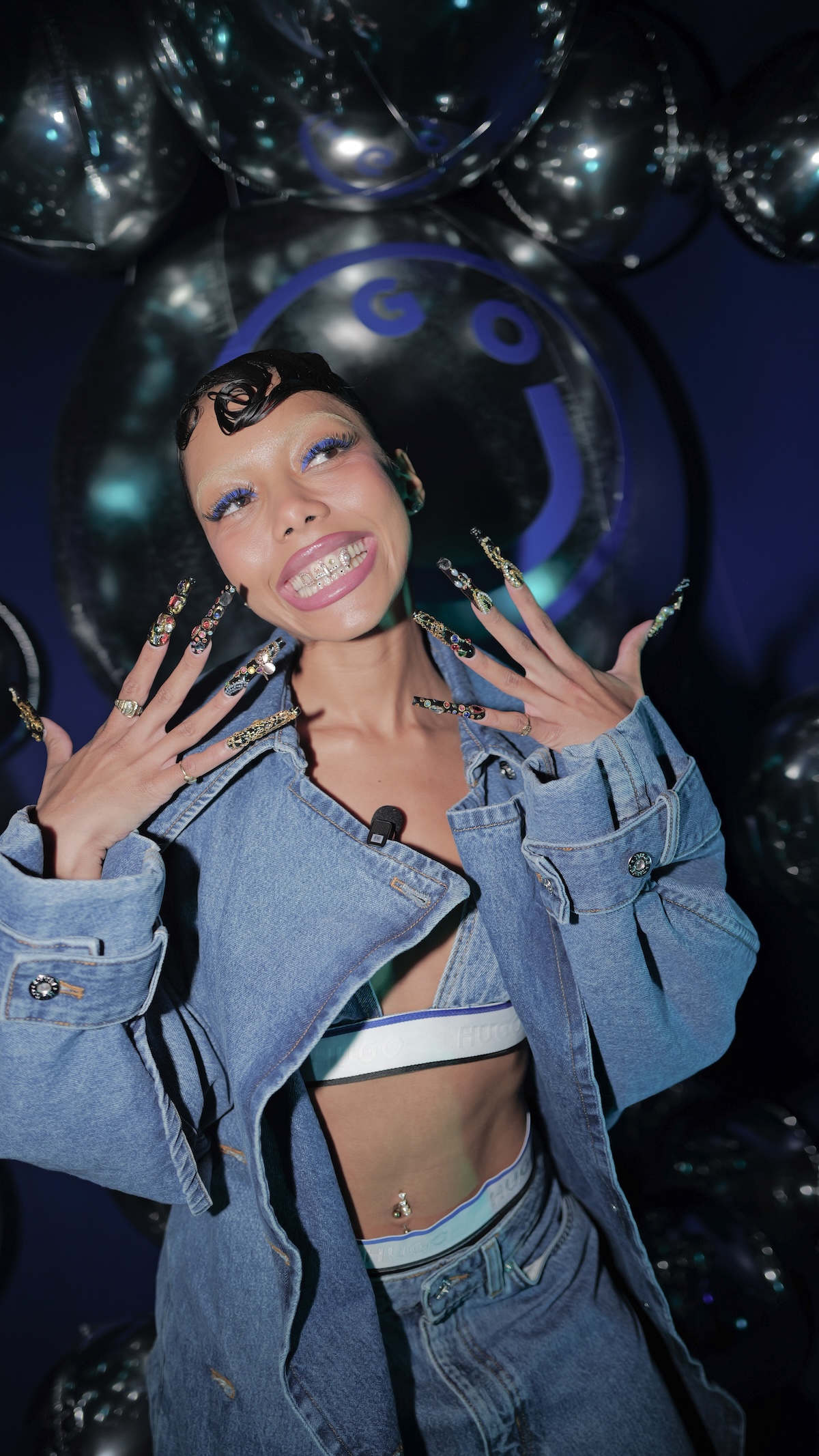
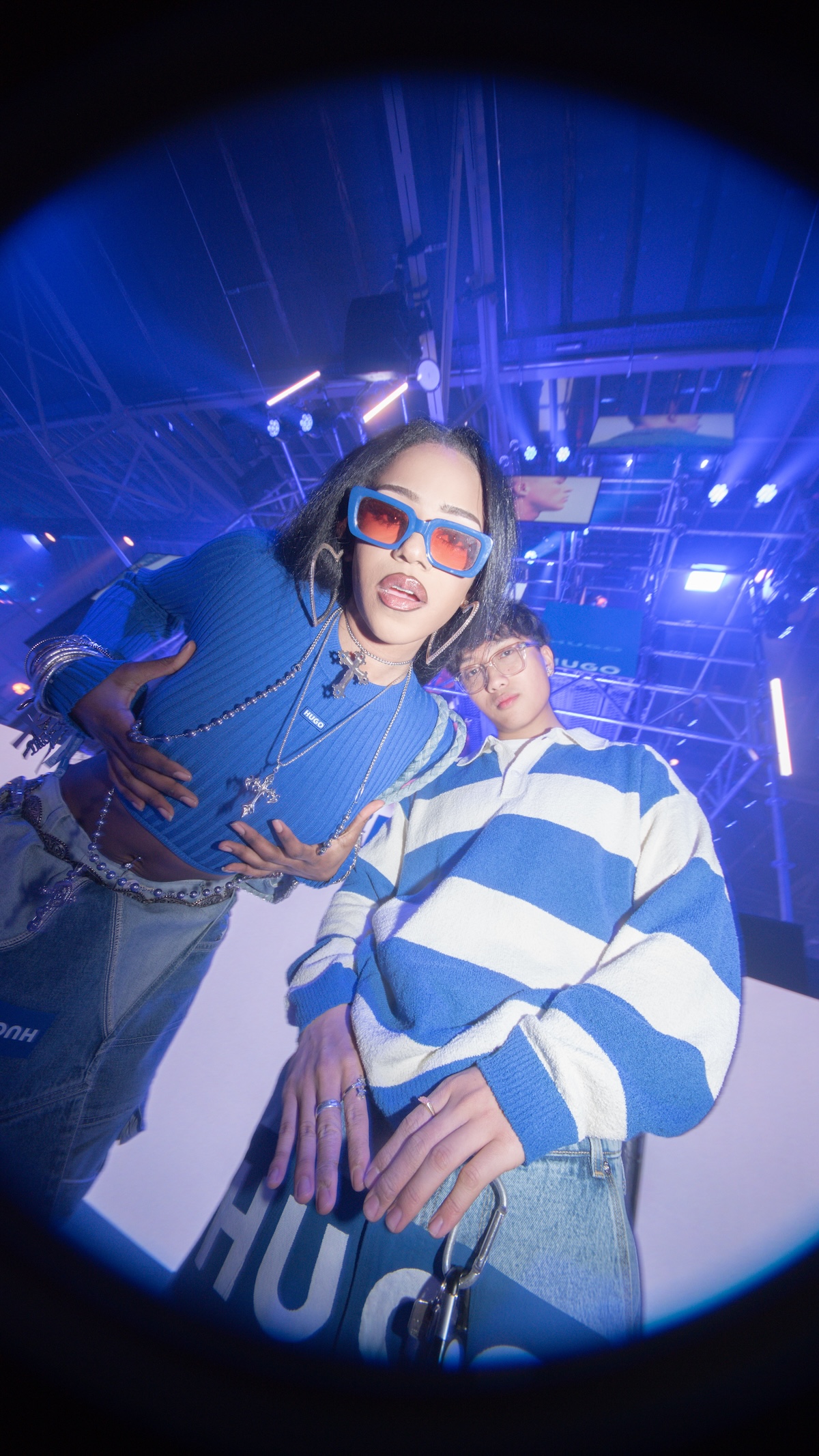
For Falcioni, bridging the interactive physical experience to the digital was central to tapping into this younger generation less afraid of technology and the unknown. With the launch came the reveal of PLANET HUGO, a virtual realm on ROBLOX (the leading metaverse ecosystem today), comprised of two 3D environments that replicate the physical event space. In the HUGO HANGOUT and HUGO FASHION MATCH, users can complete obstacles, and dress their avatars (and other user's) in digital wearables.
